Bronx Calling: The Sixth AIM Biennial
Installation photograph, Bronx Calling: The Sixth AIM Biennial, The Bronx Museum of the Arts, Jan 26 - Mar 31, 2024, photo © The Bronx Museum of the Arts
The Bronx Museum is pleased to announce Bronx Calling: The Sixth AIM Biennial, featuring 53 artists who explore issues related to race, gender, class, sexual orientation, age, ethnicity, religion, and nationality as a means of contending with colonial histories and imagining speculative futures. Of African, Asian, Latin, Middle Eastern, Caribbean, European, and Australian descent from over 20 countries, the artists each draw on their lived experiences and cultural identities to critique systems of power.
Due to the pandemic, the Biennial for the 2020 and 2021 AIM fellows was postponed, such that this two-part exhibition will showcase more cohorts than ever in a single Biennial. Bronx Calling will take place in two parts throughout the first half of 2024 in the North Wing as the Museum’s South Wing remains closed for renovation.
The first exhibition will present 26 artists including Chris Cook, Kim Dacres, Luis Gutierrez, Maya Jeffereis, and Yelaine Rodriguez from January 26 to March 31, 2024, and be followed from April 12 to June 16, 2024 with a second exhibition featuring 27 artists, including Priscilla Aleman, Sarah Friedland, Daniel Giordano, Woomin Kim, Sagarika Sundaram, and A Young Yu.
Curated by Eileen Jeng Lynch, Director of Curatorial Programs, Bronx Calling celebrates the work of artists from the 2020, 2021, 2022, and 2023 cohorts of the Museum’s Artists in the Marketplace (AIM) Fellowship, which, since 1980, has supported New York’s artist community through this flagship artist development program that provides emerging artists with career management resources, helping them navigate the professional practices of the art world.

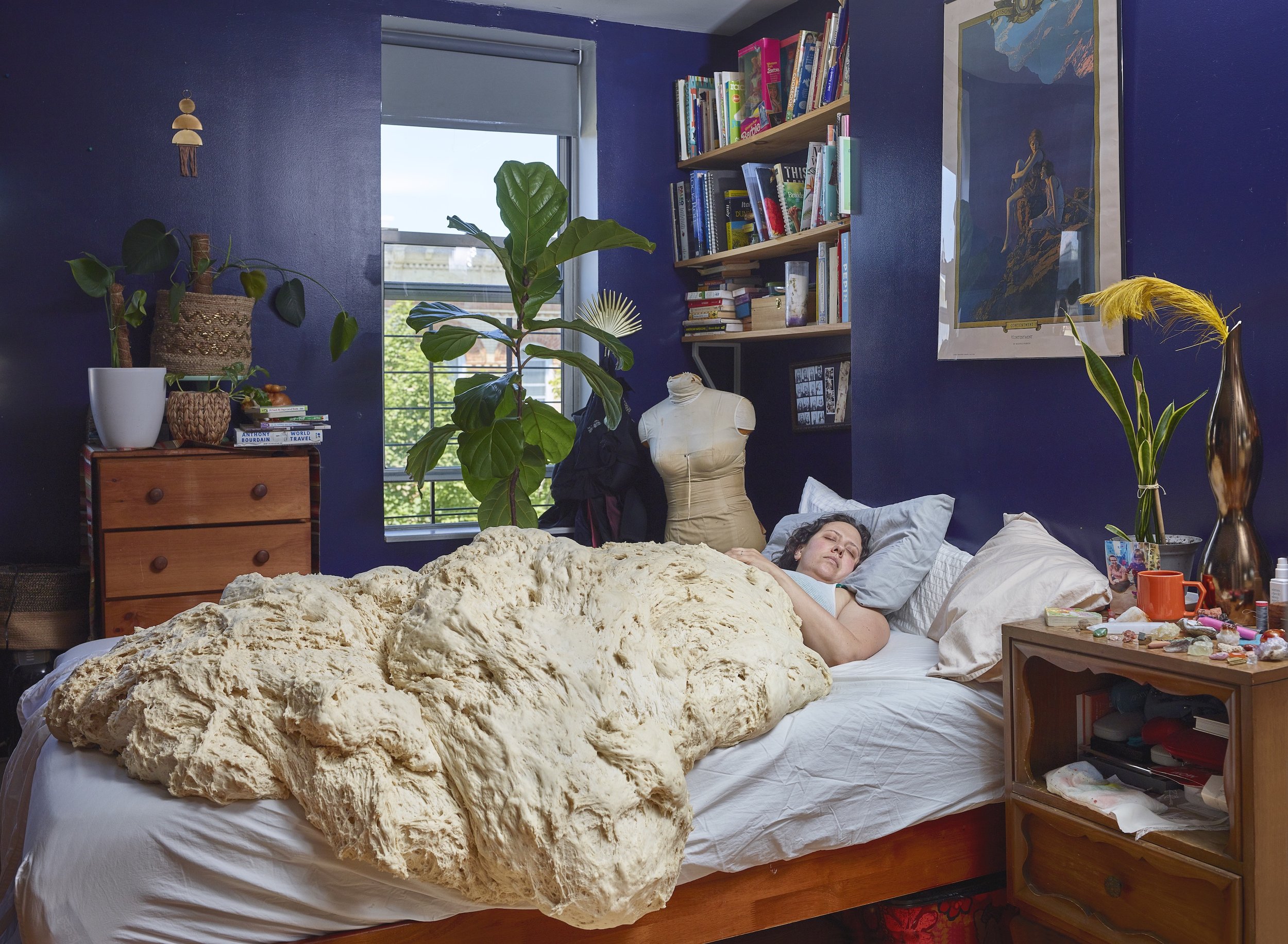
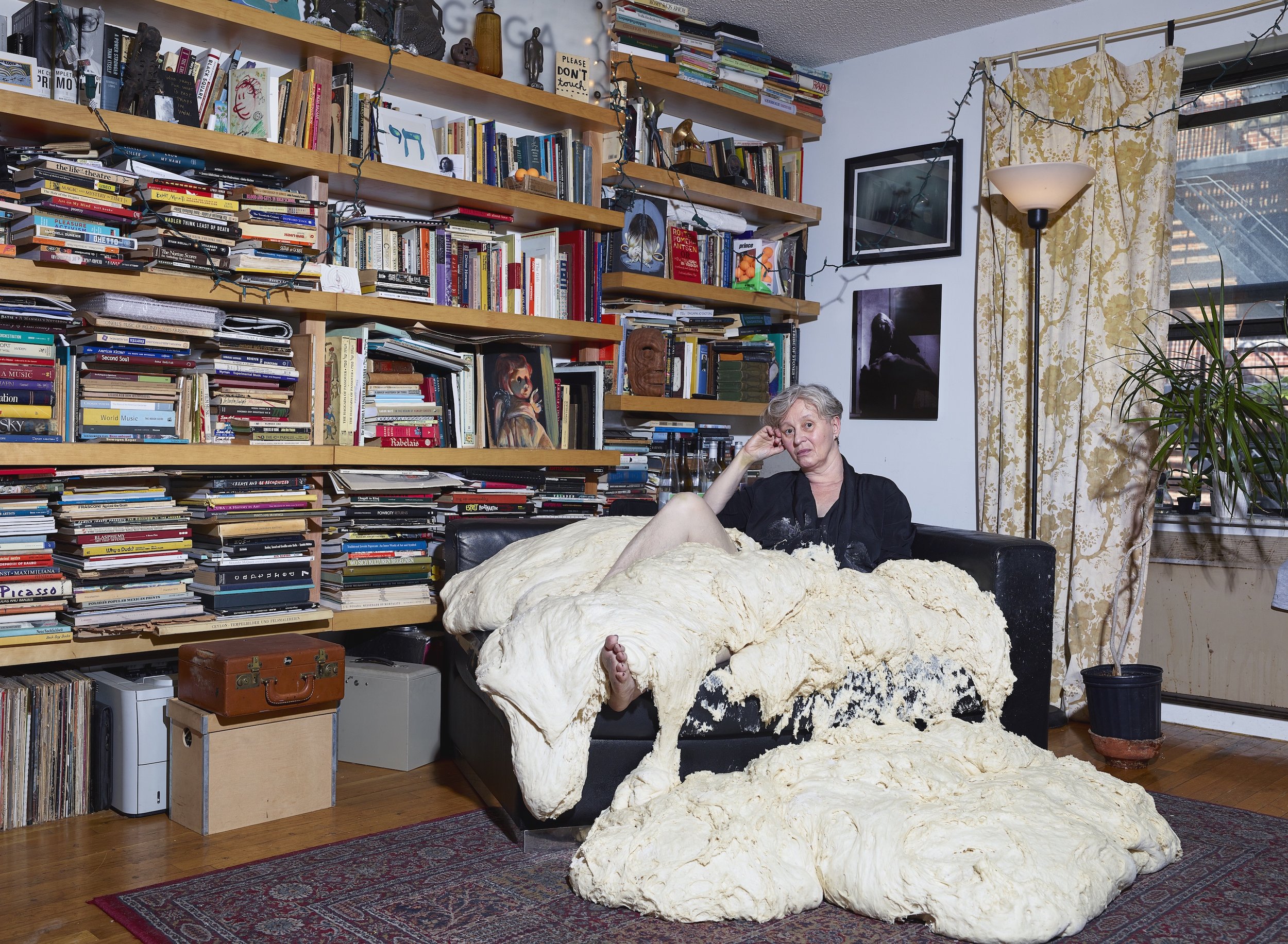
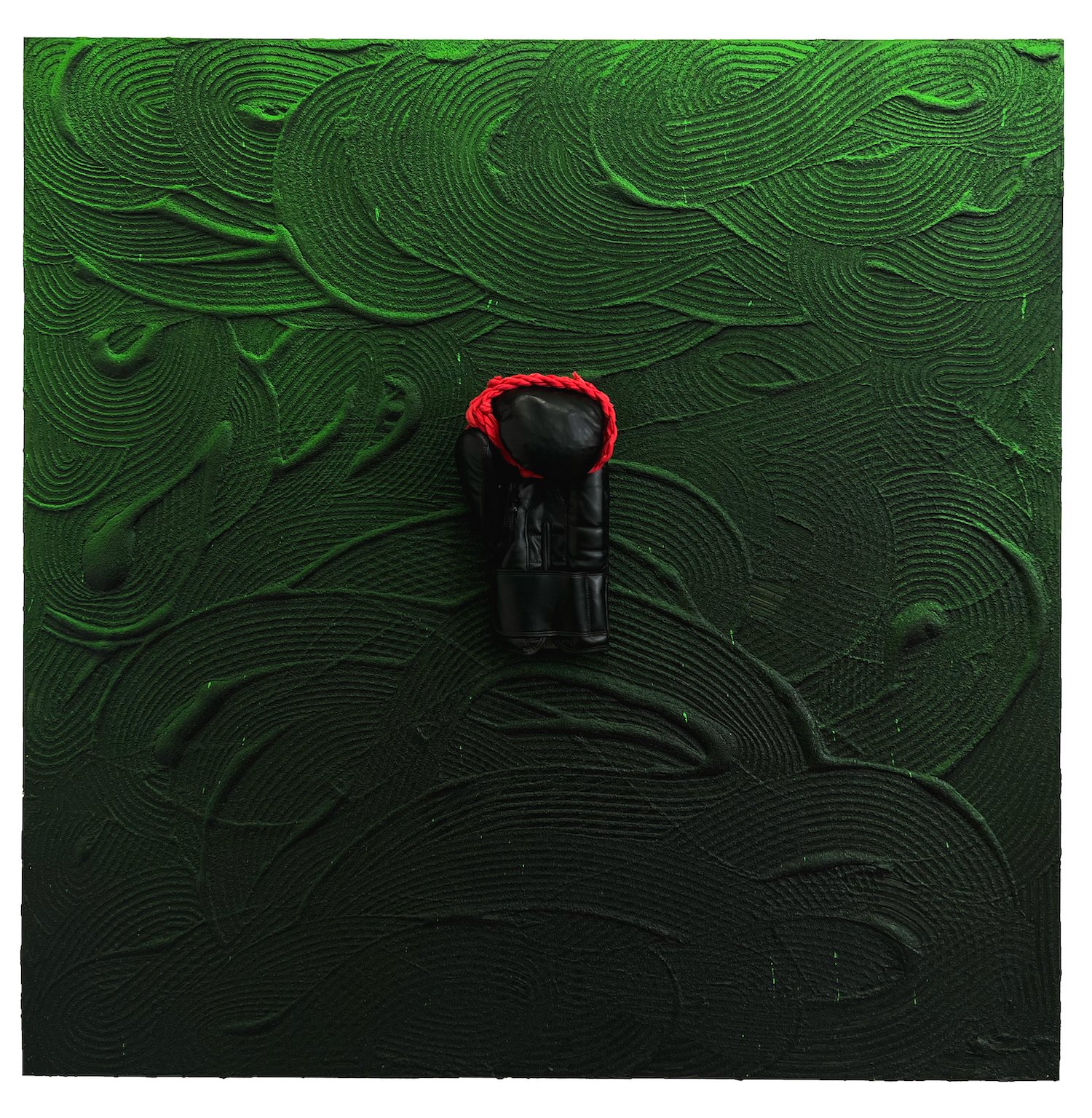
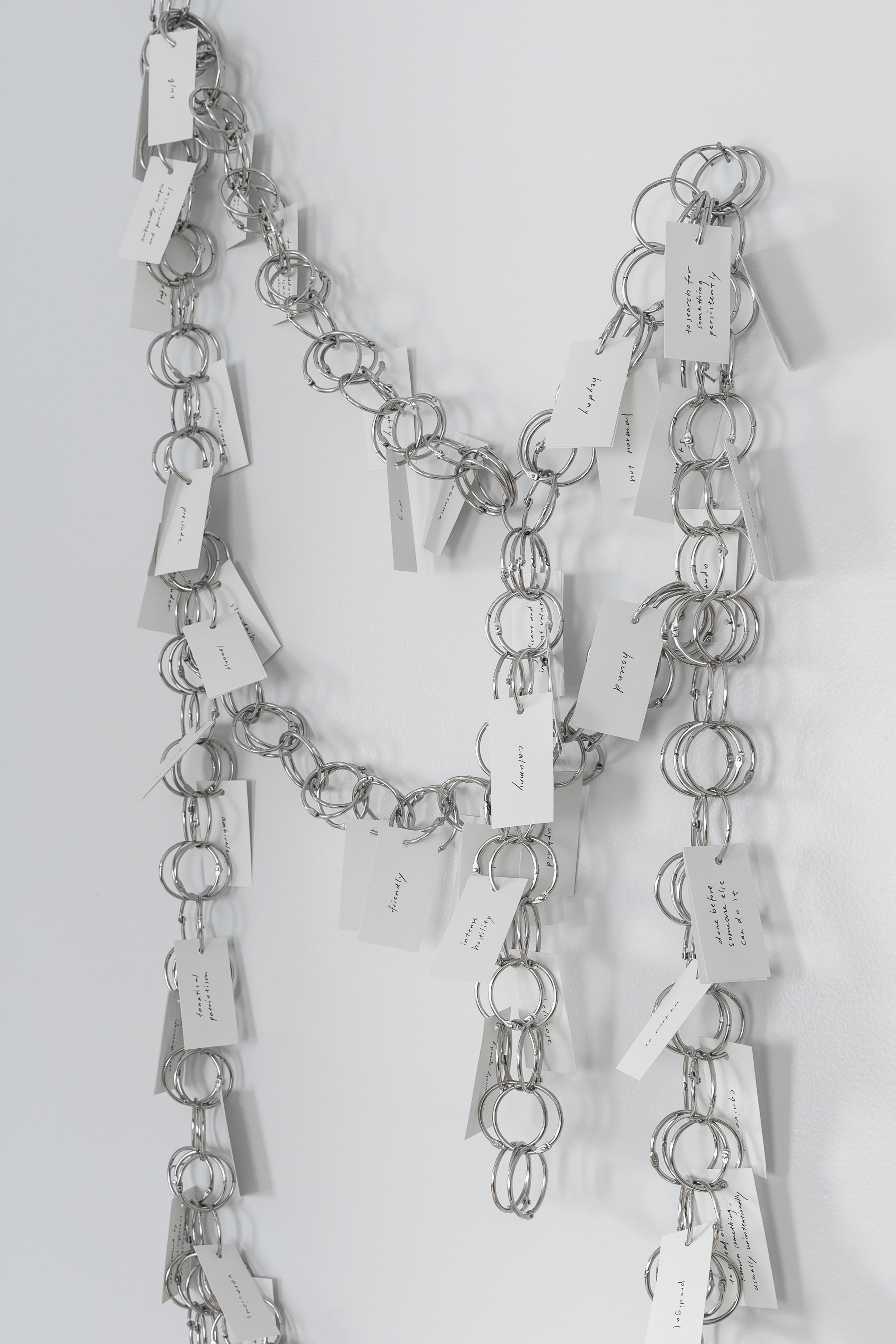

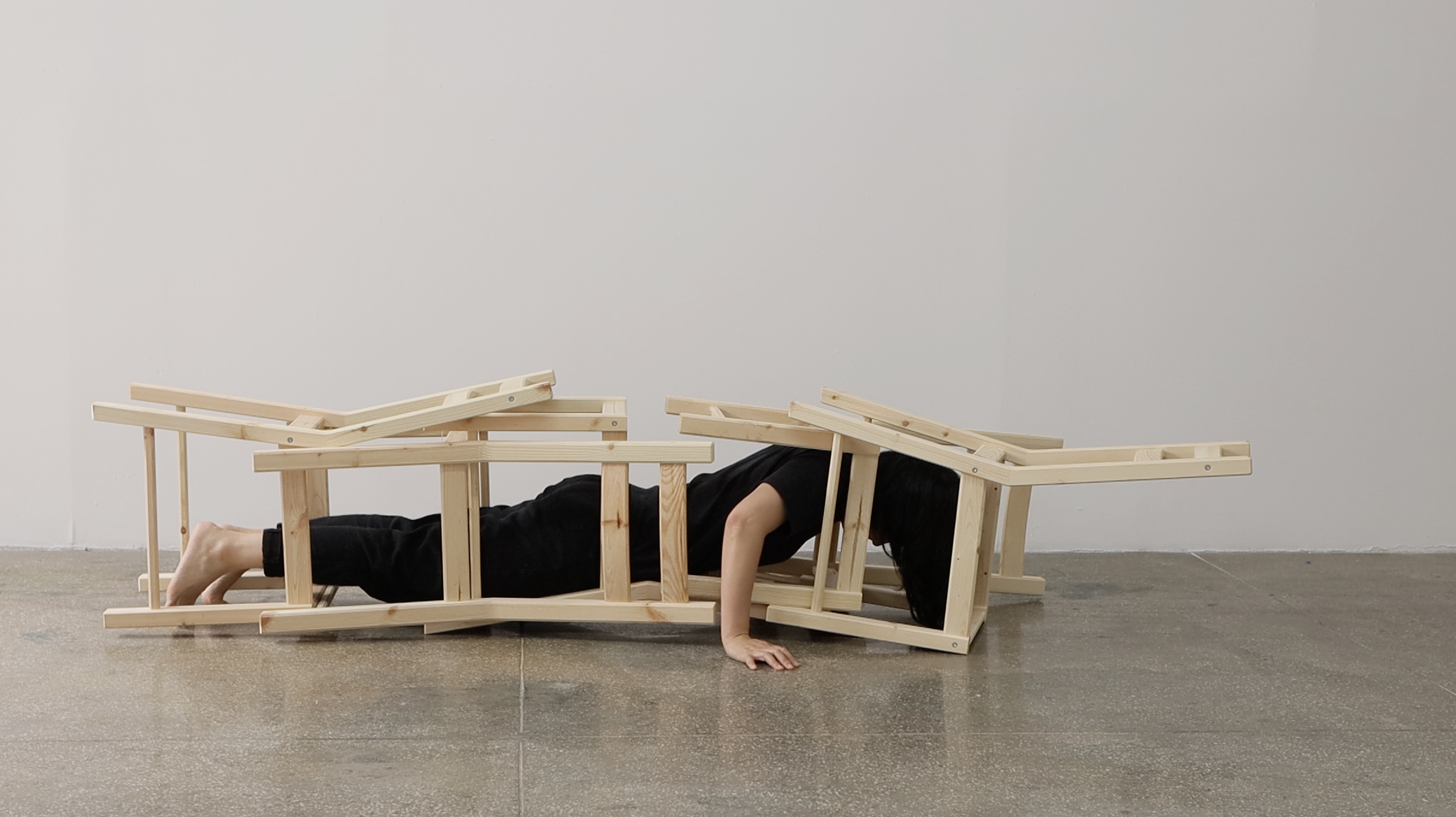
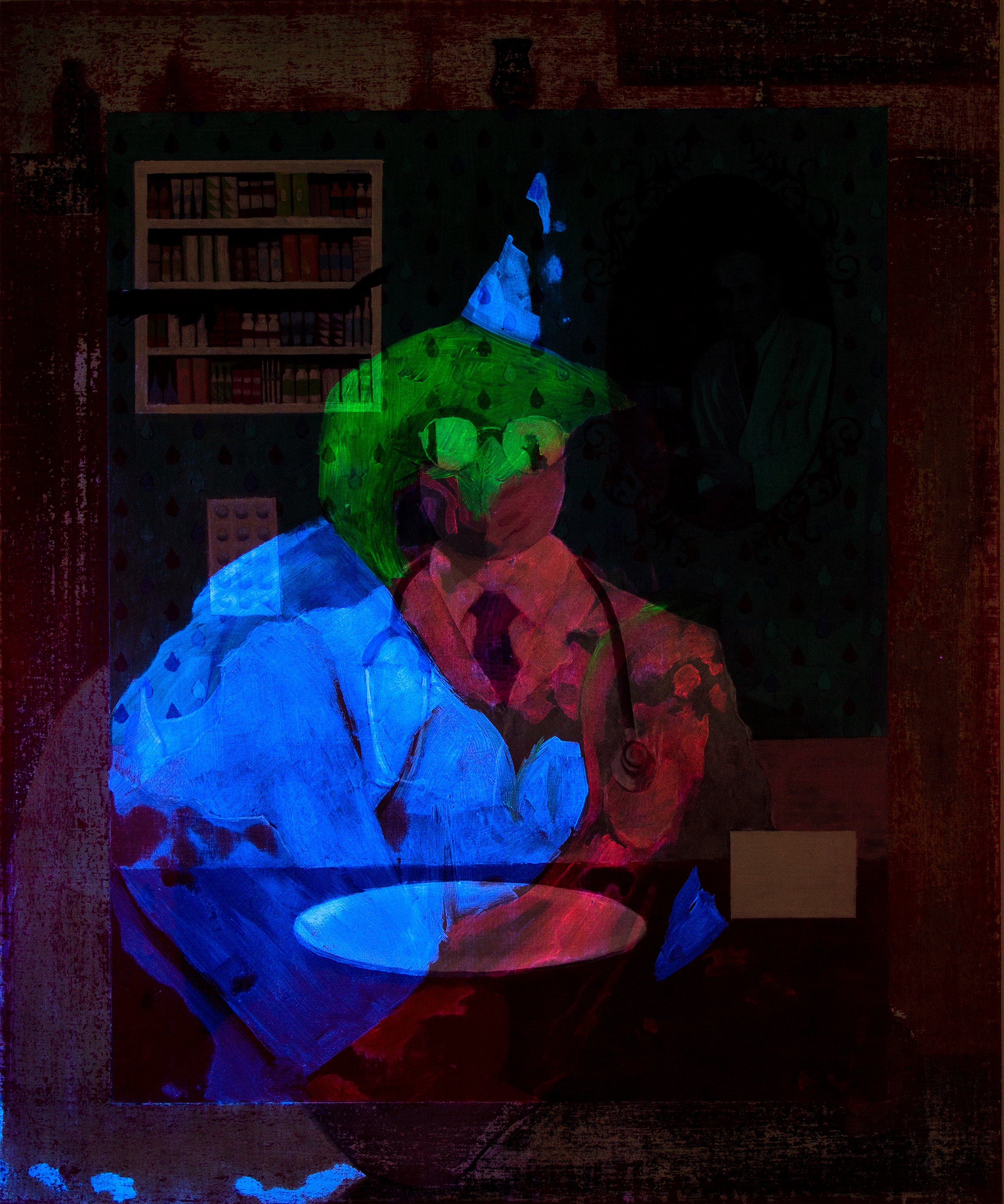
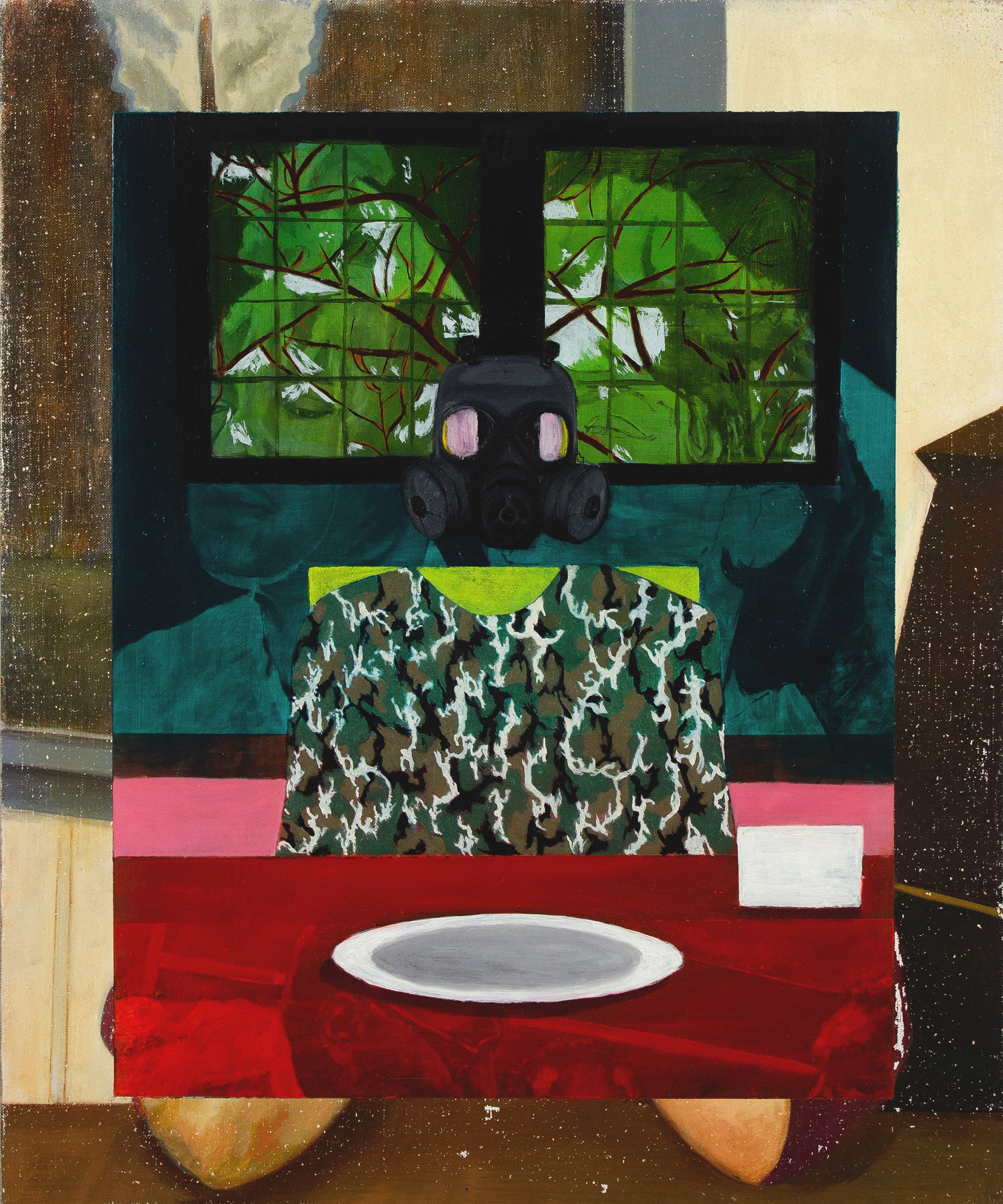
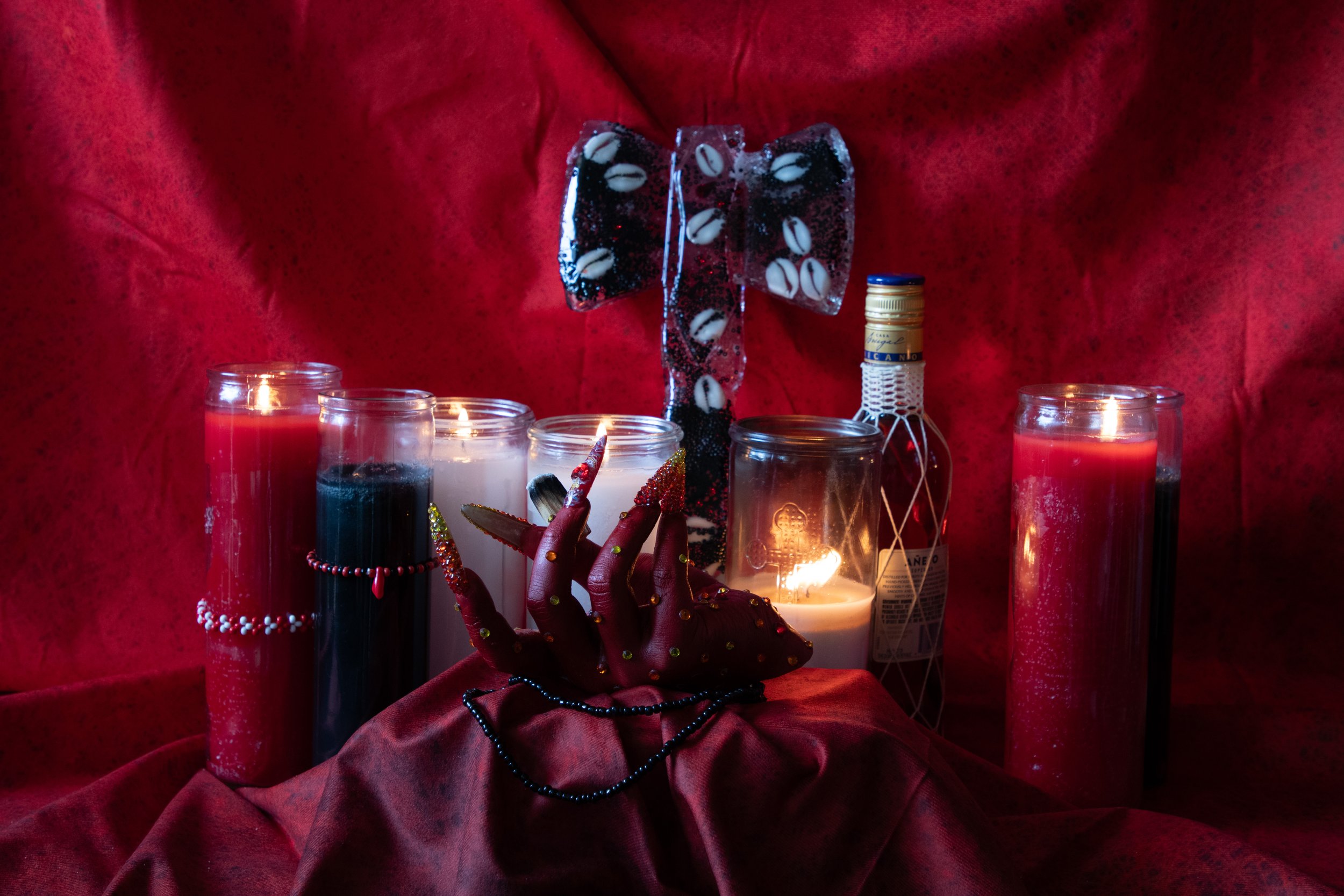
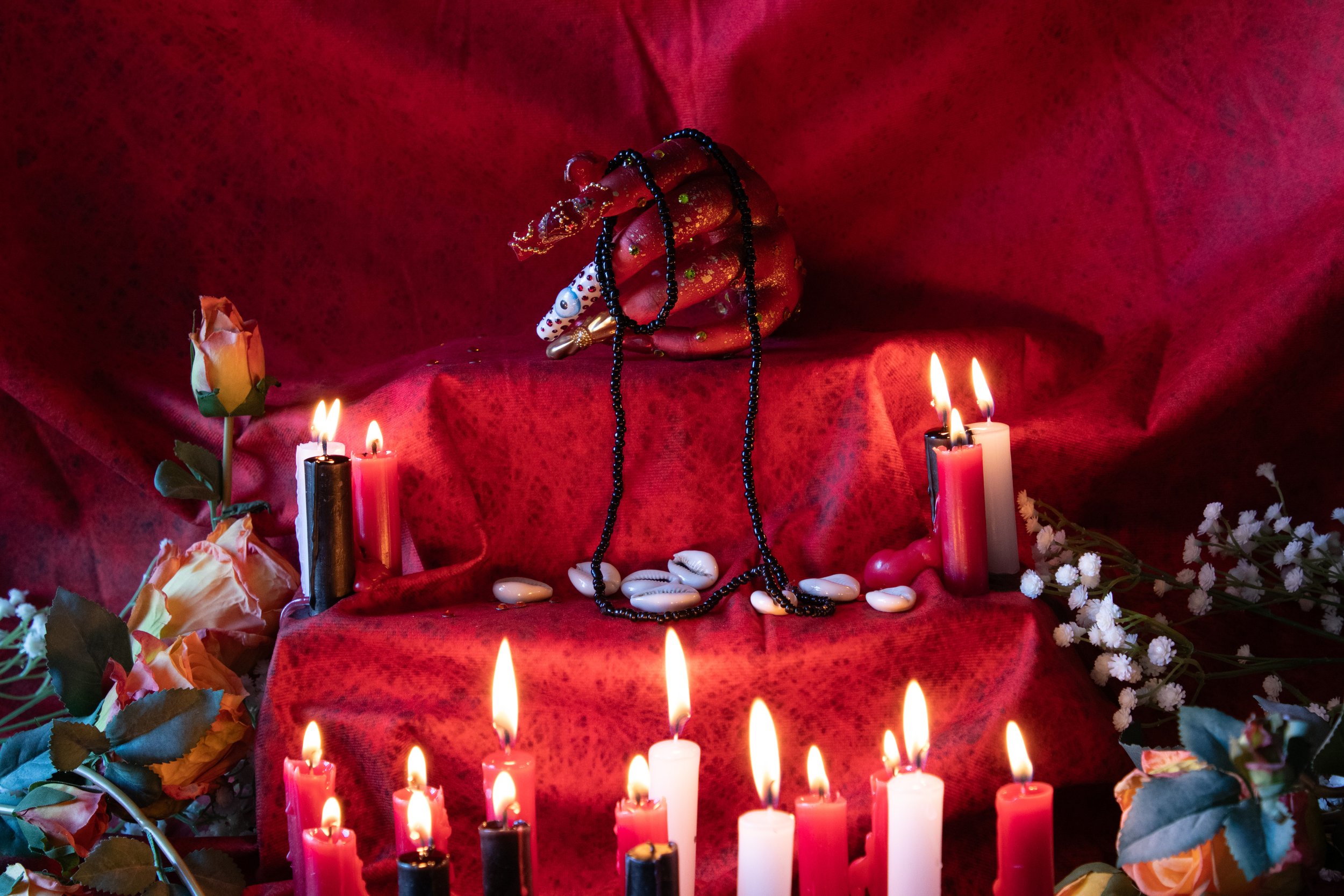
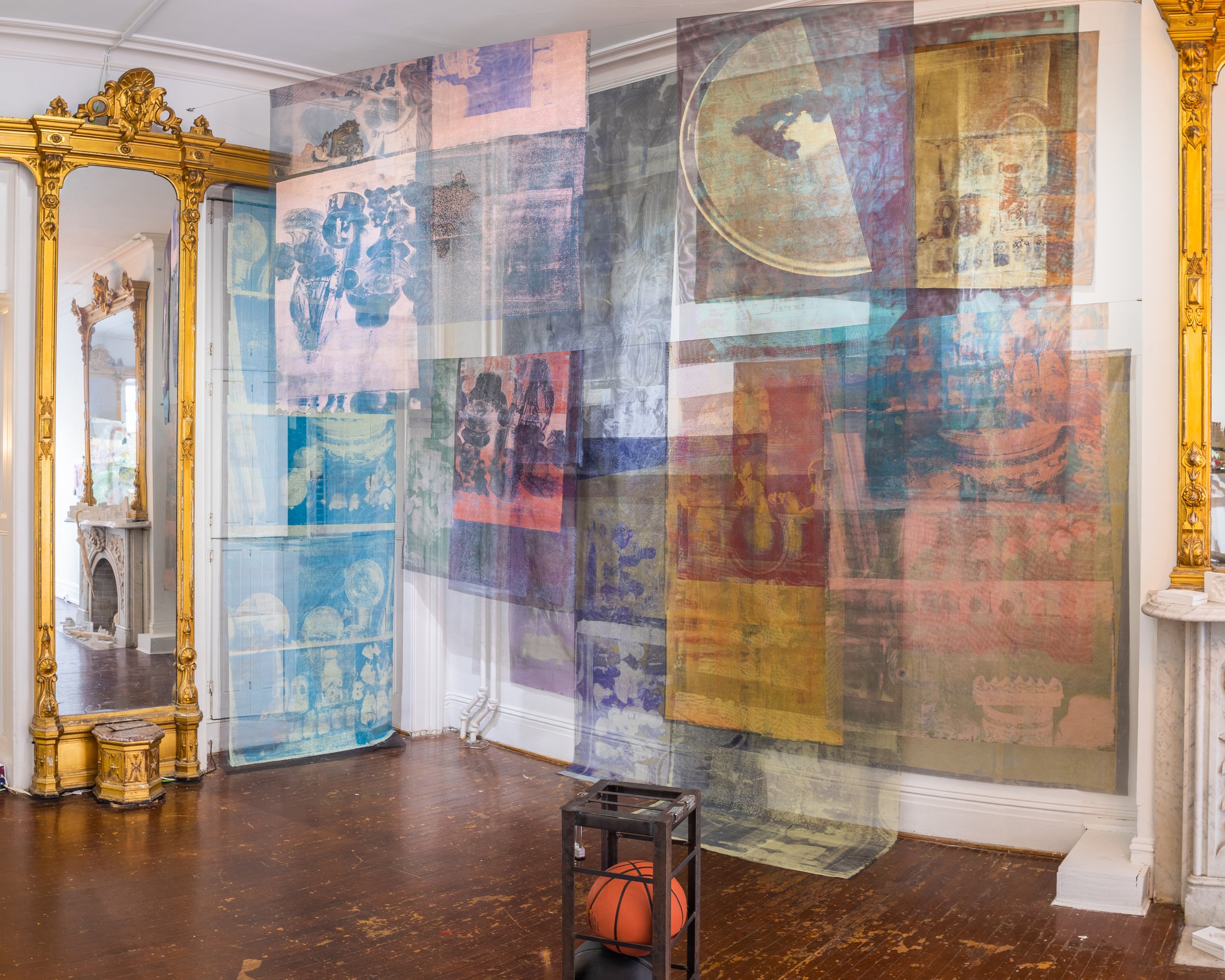
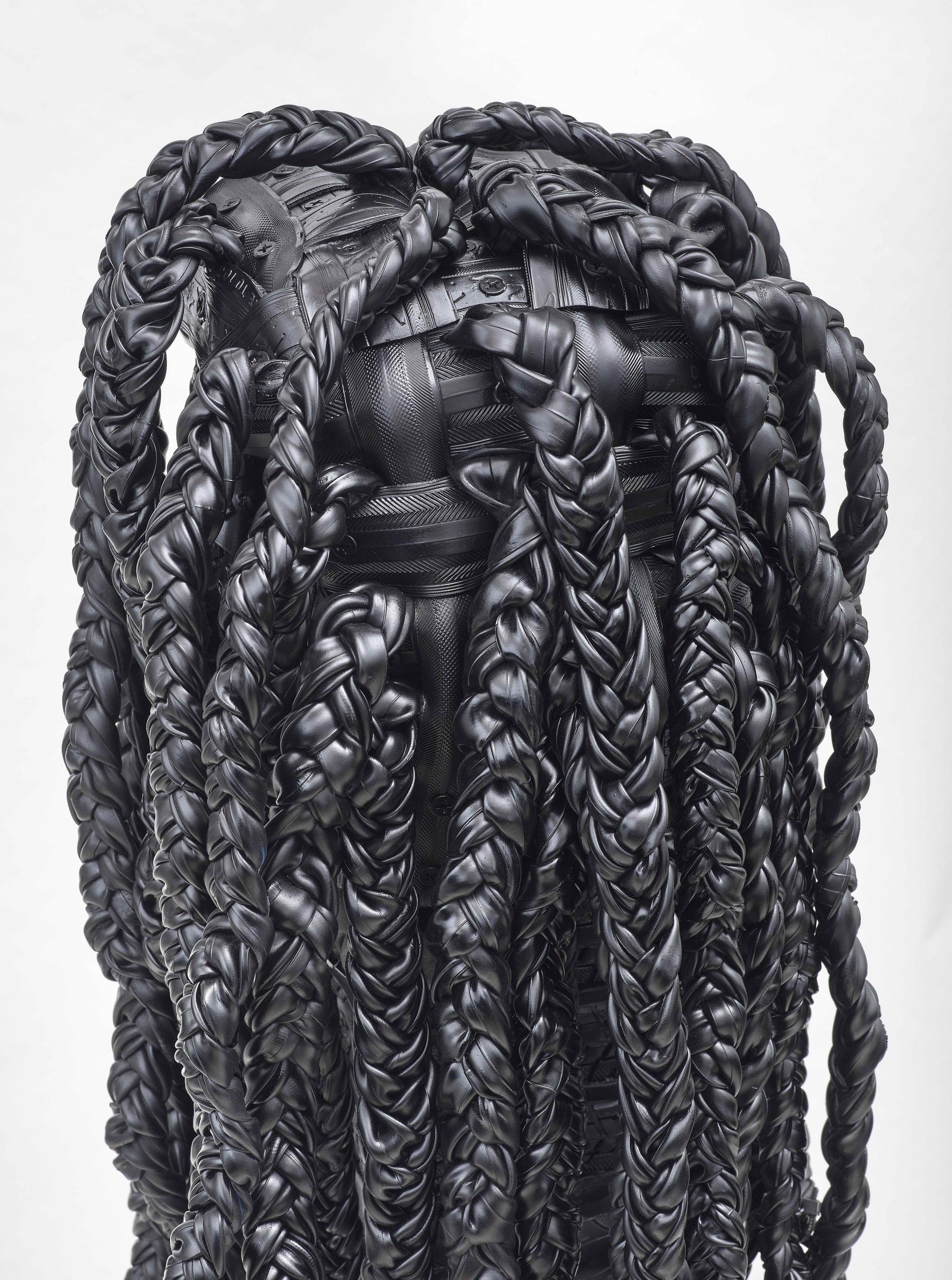
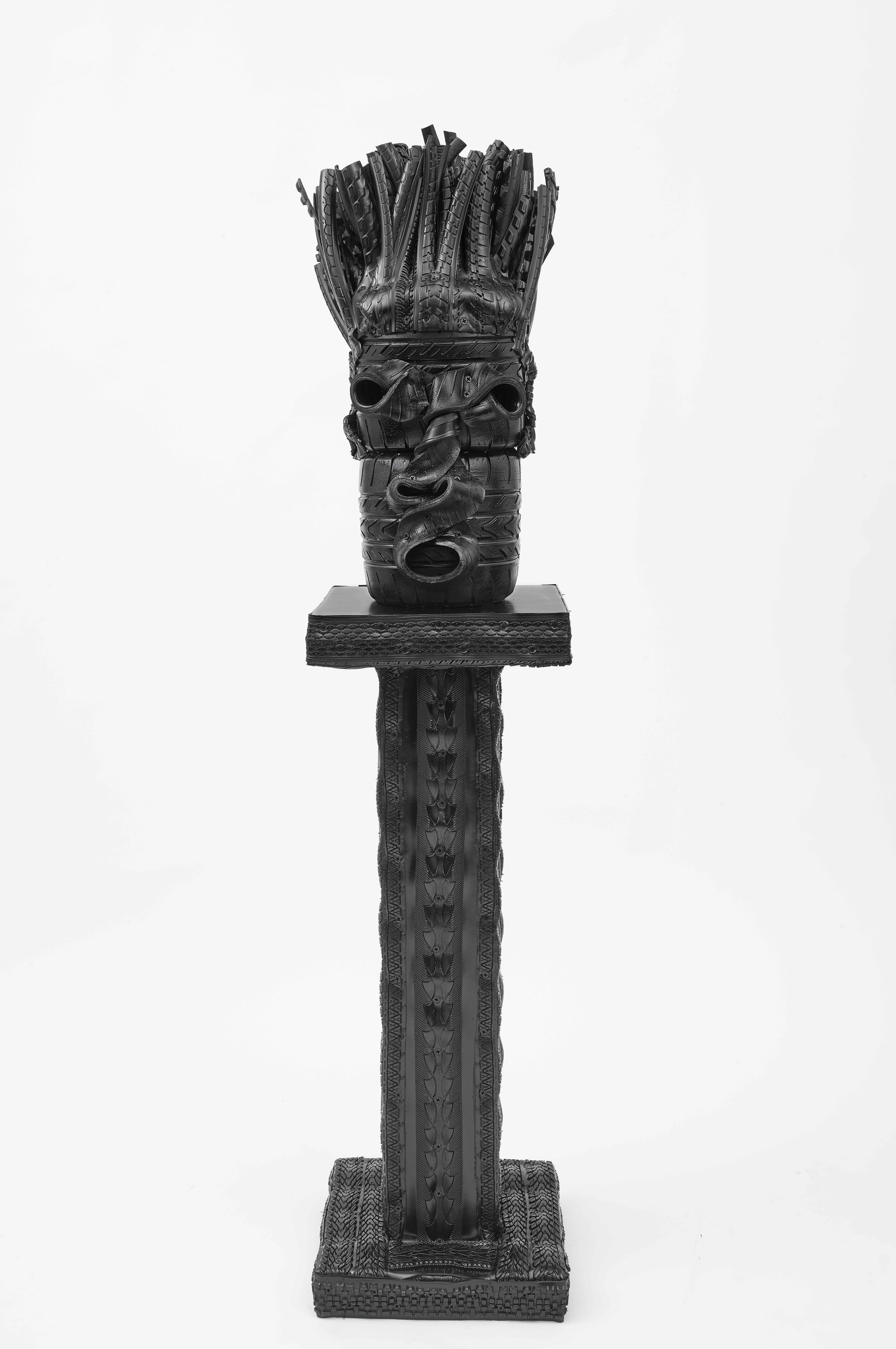
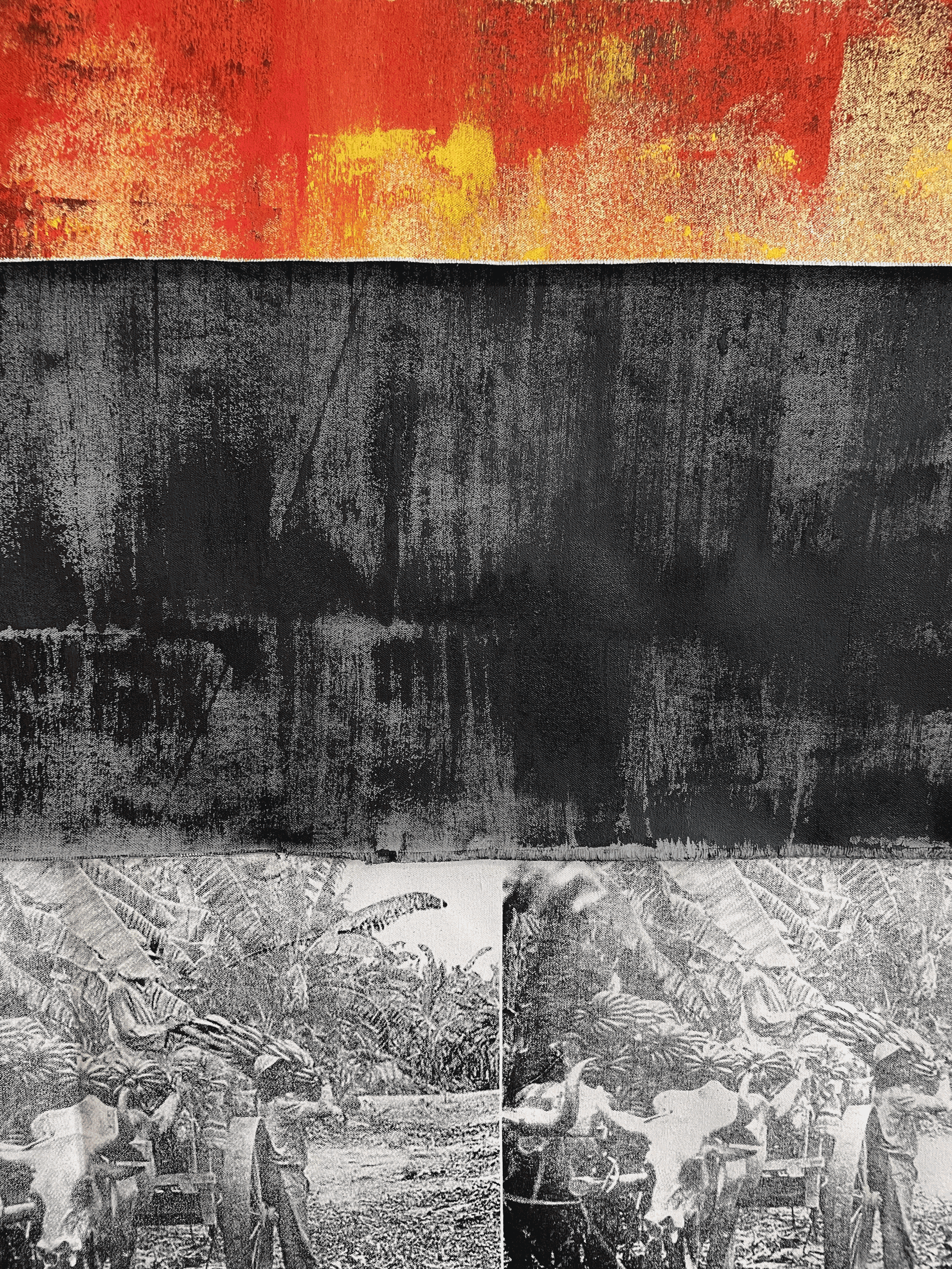
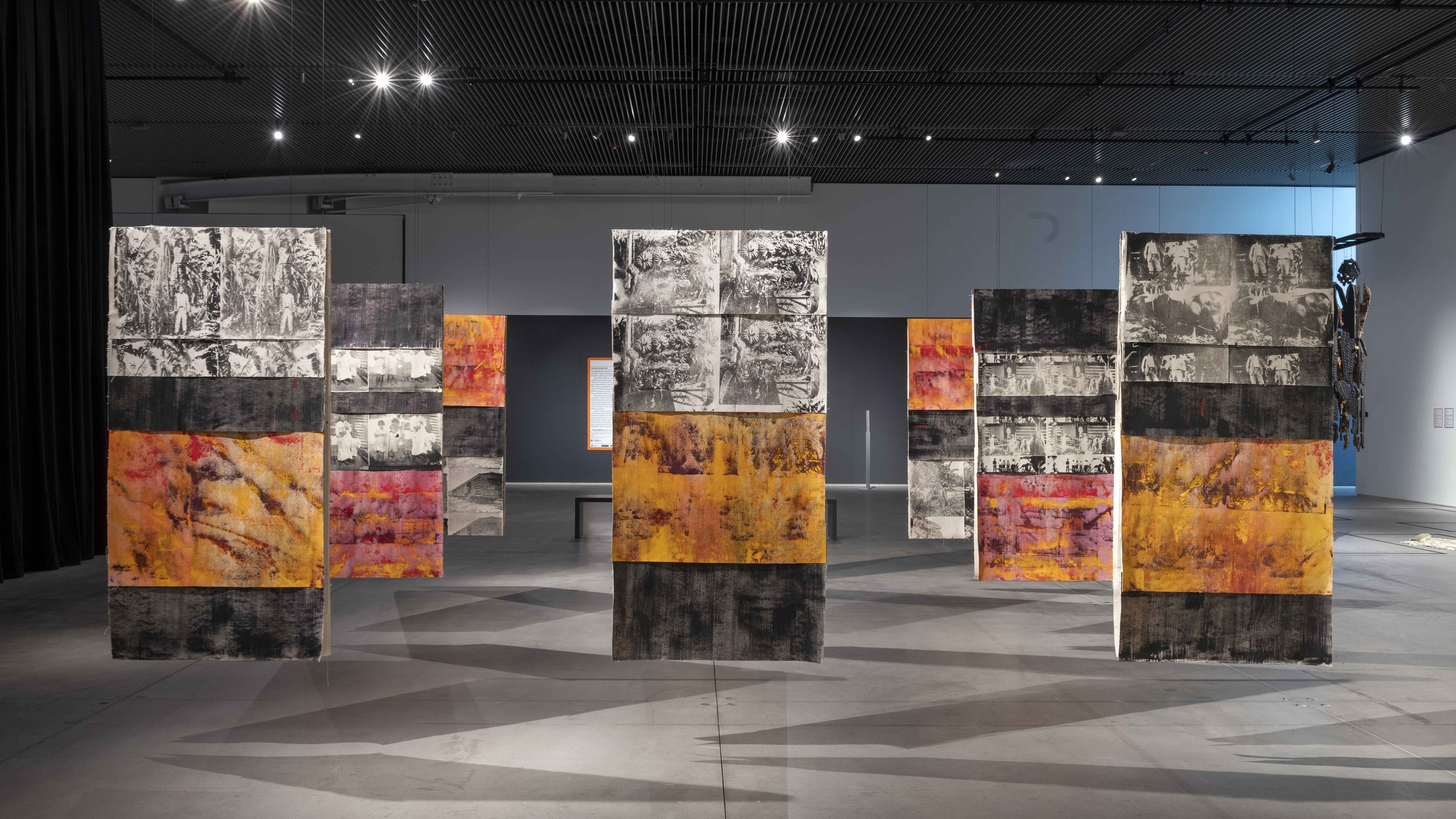
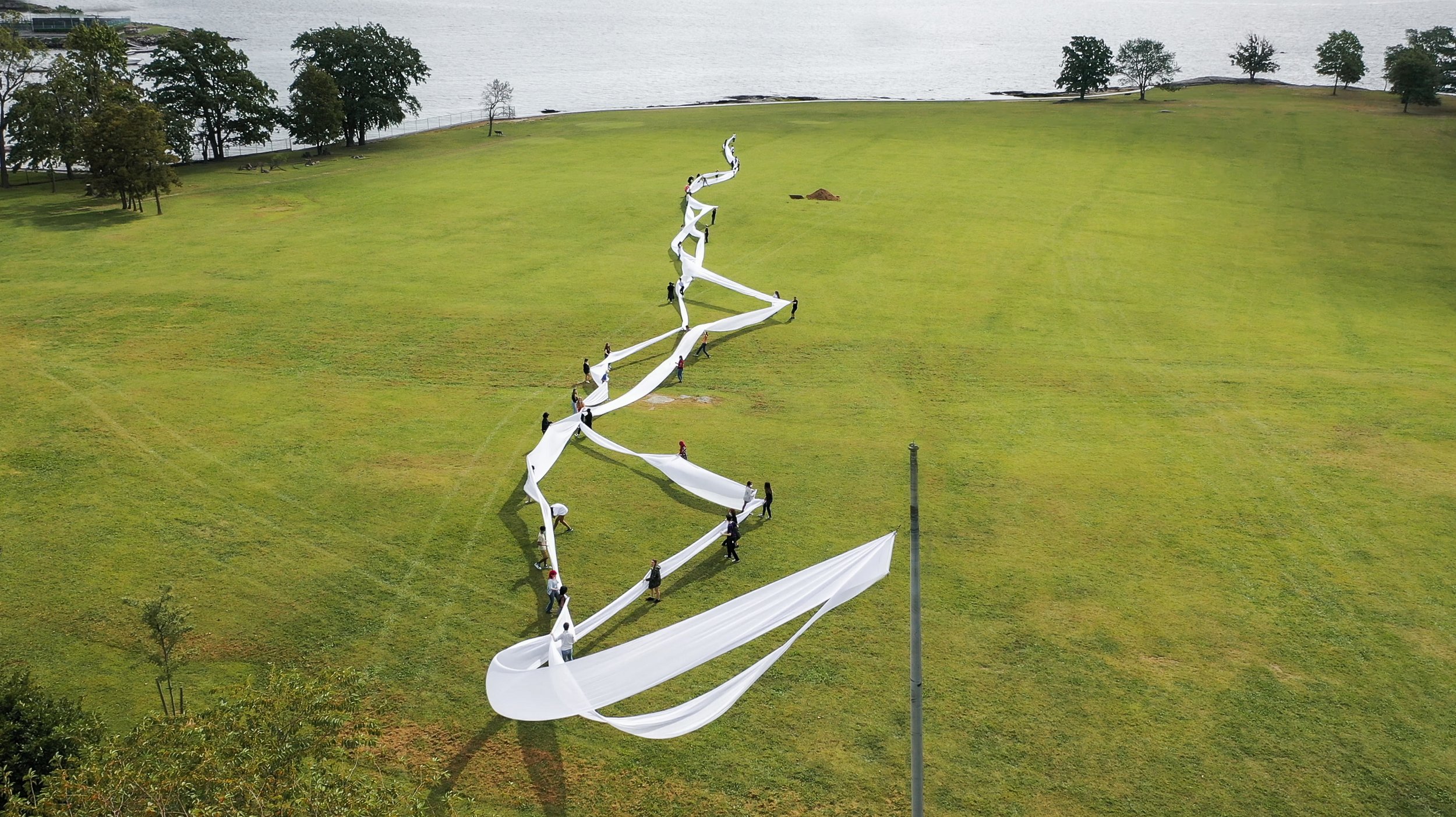
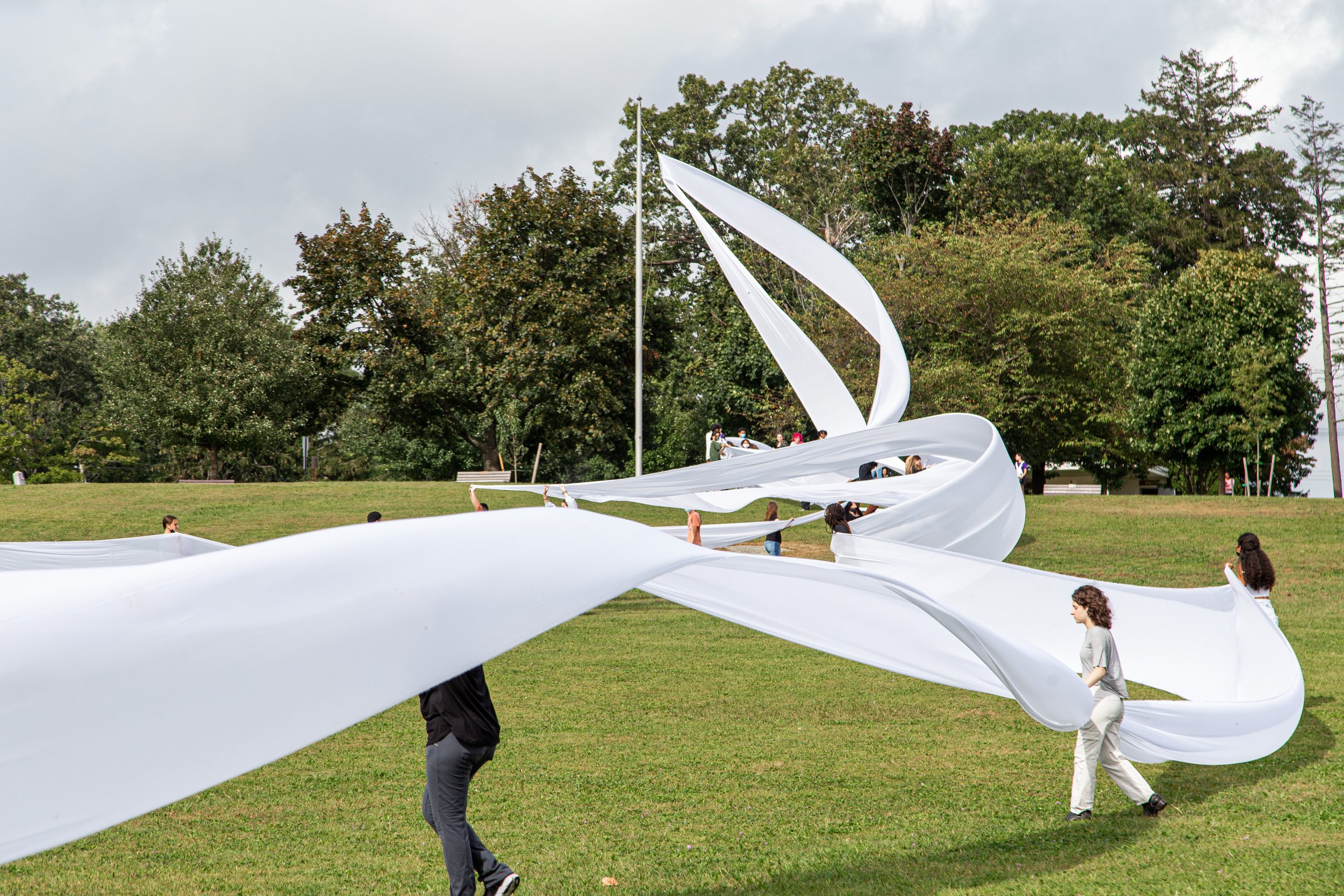
photo © The Bronx Museum of the Arts
PART ONE: Centering contemporary and critical issues drawn from the artists’ lived and embodied experiences, the 26 artists explore cultural heritage, examine labor issues, and highlight the impact of colonial histories on personal and collective identities through varied means and media. Featured artists are: Syd Abady, Aika Akhmetova, Santina Amato, Miguel Braceli, Chris Cook, Walter Cruz, Kim Dacres, Saba Farhoudnia, Ronen Gamil, Judy Giera, Luis Gutierrez, Jennifer Chia-ling Ho, Peter Hoffmeister, Maya Jeffereis, E. Lombardo, Dario Mohr, Joshua Nierodzinski, Jiwon Rhie, Ruth Rodriguez, Yelaine Rodriguez, Ami Park, Fred Schmidt-Arenales, Yesuk Seo, Kyle Utter, Misra Walker, and Junlin Zhu.
New York-based artist and filmmaker Maya Jeffereis, for example, fuses past and present by drawing upon her ancestral histories and focusing on maternal lineage in a new video. This single-channel video comprises cyanotypes on 16mm film. Jefferies creates the piece to abstract time and space and convey emotional, psychological, and physical memories and stories surrounding labor and migration. Questions of labor and colonial histories are similarly addressed by mixed media artist Luis Gutierrez in Lo Invisible, Una Fruta Tropical (2024), an installation of 72 paintings influenced by historical archives pertaining to the stories of banana plantation workers for United Fruit Company in Colombia in 1928, particularly their strike for fair wages and human labor conditions, which led to their mass killing by the Colombian Army.
Much like Bronx-based artist Kim Dacres, who combines found tires and rubber from automobiles and bicycles with braiding techniques to create sculptures that represent everyday people of color, Walter Cruz highlights connections between art, design, and architecture to understand how Black and Brown people activate and command space. Afro-Dominican and Bronx-based artist Yelaine Rodriguez unites the two worlds that have shaped her identity: the Caribbean and the U.S. Drawing upon vernacular culture of the late 1980s and ‘90s—which are exemplified by acrylic nails, beadwork, and cowry shells in La Hija De Shango (2022)—to articulate the stereotypes and judgments she faced growing up, Rodriguez creates sculptures that reference deities of the African diaspora in shrine-like compositions that not only contend with these stereotypes, but serve to embrace and uplift them. A shared focus on the exploration of gender identity and the challenges faced by women emerges amongst the work of Judy Giera, Santina Amato, E. Lombardo, and others in this first iteration of the Biennial. Through various mediums and approaches, these artists contend with societal issues, and highlight the emotional and psychological dimensions of womanhood. For example, Brooklyn-based Giera imbues her work in painting, video, and performance with a sense of humor to emphasize her non-cisgendered experience of womanhood. The abstract paintings that result thus highlight transgender joy while examining the psychological stakes and misogyny faced by transgender women in the United States today. Australian-born Amato similarly investigates the physical, psychological, and social manifestations of the female body through the use of domestic materials. In Portraits Of Women With Their Weight in Dough (2023), the artist invites women from diverse backgrounds to pose for portraits with their weight in dough, as a part of her ongoing photographic and video series that addresses the emotional labor associated with womanhood. And finally, via a collaging of queer and feminine imagery taken from both art historical and pop cultural sources alike, Lombardo turns to the media to examine how the narratives we consume inform conceptions of identity.

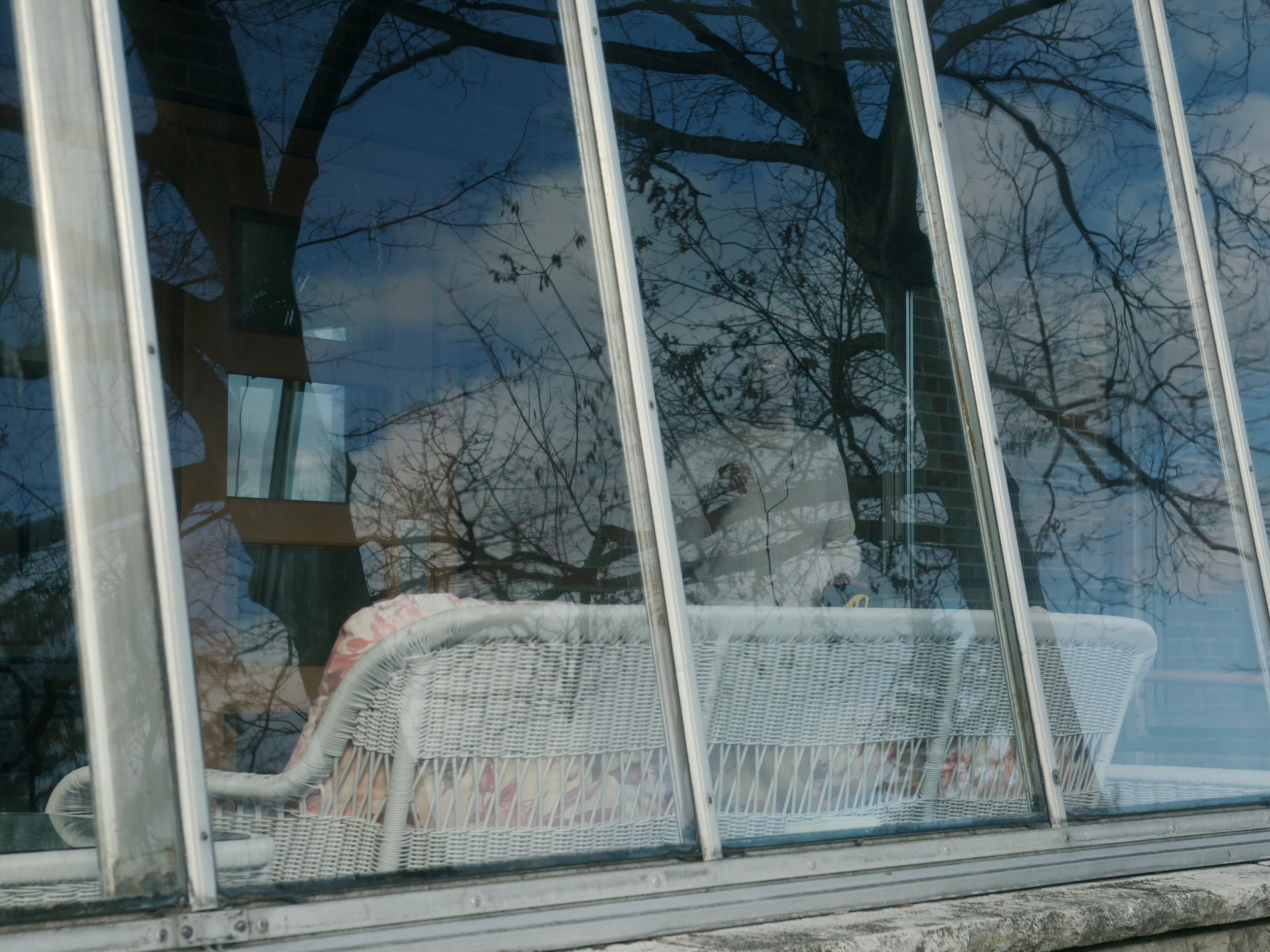

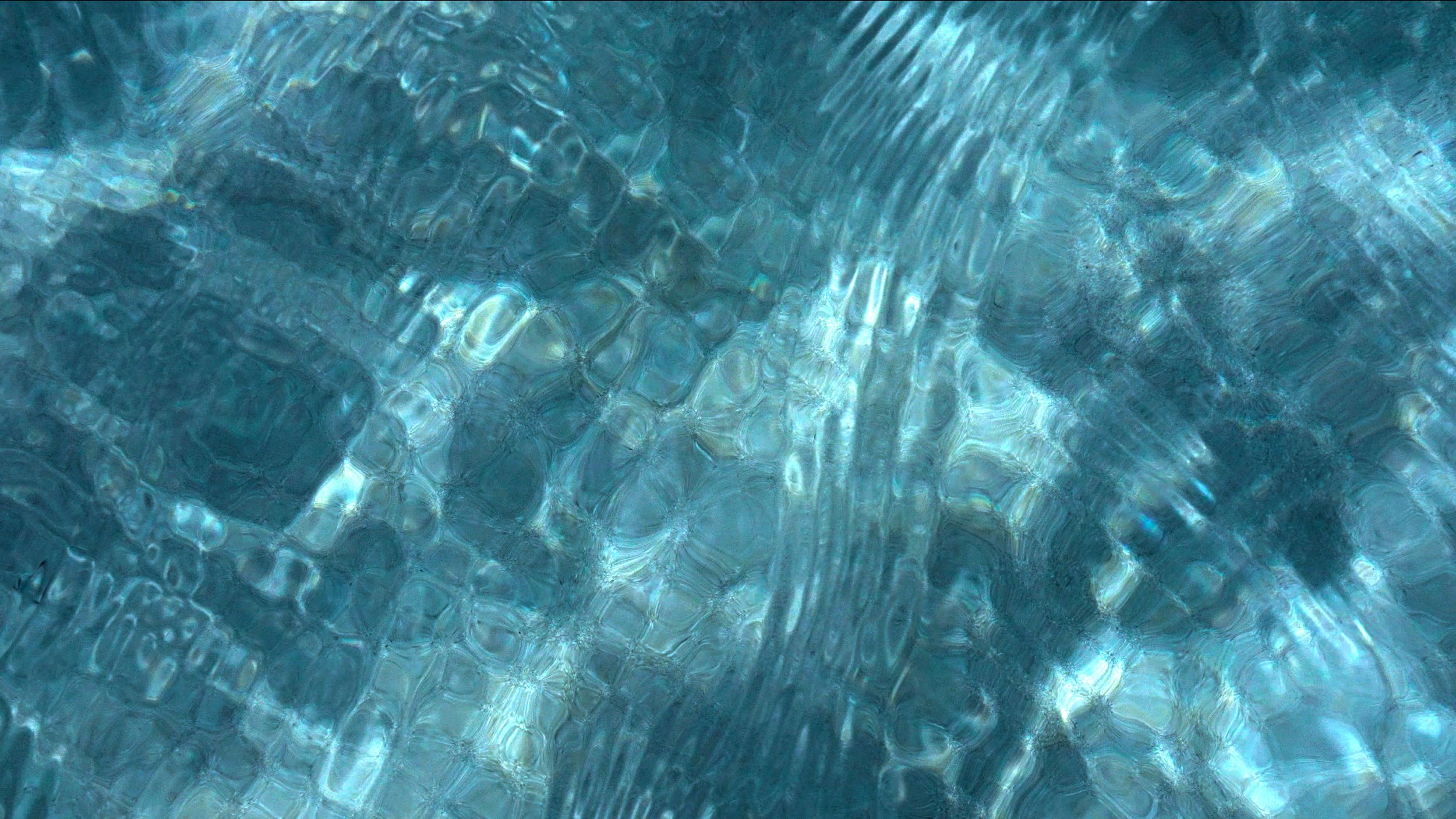
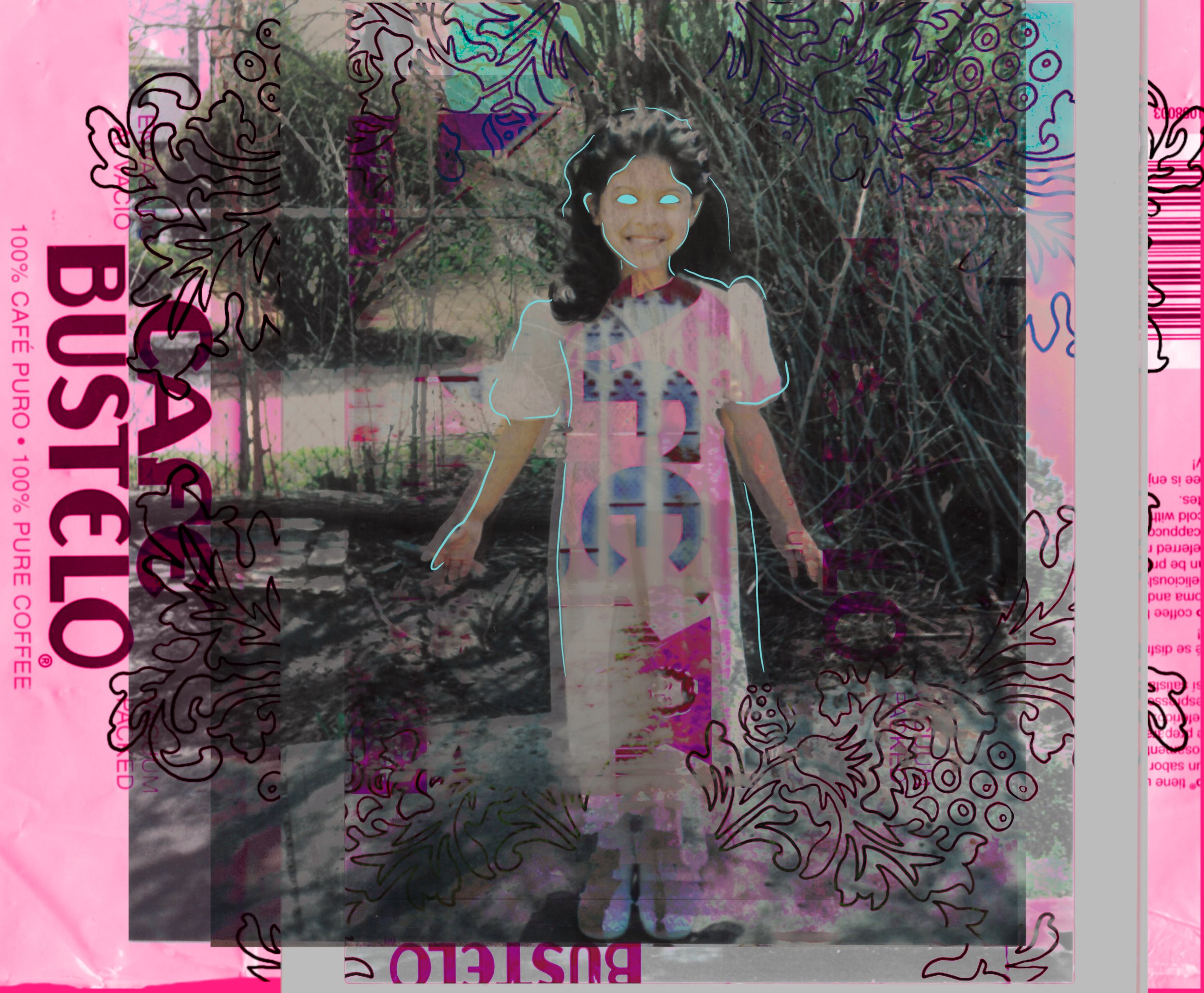
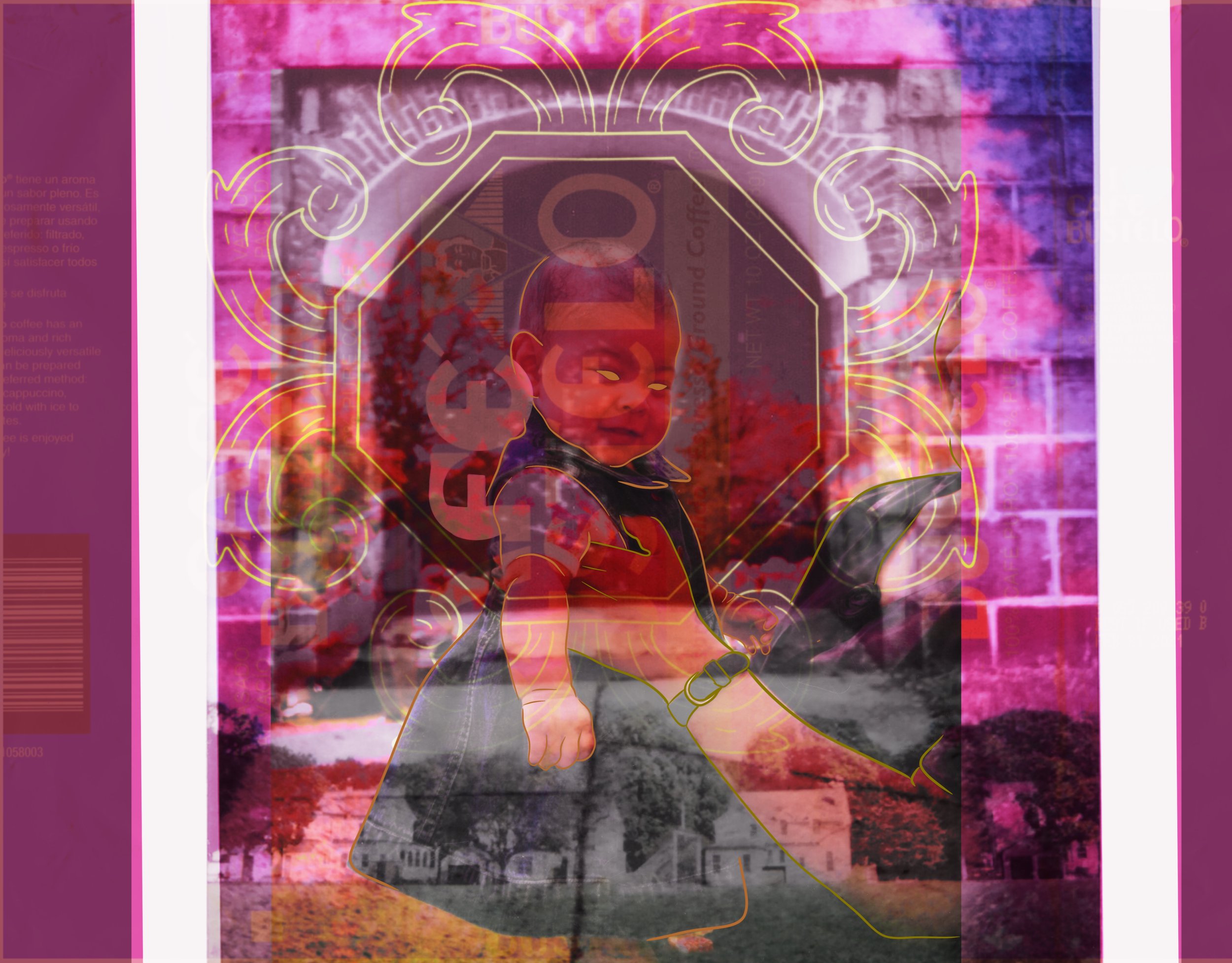
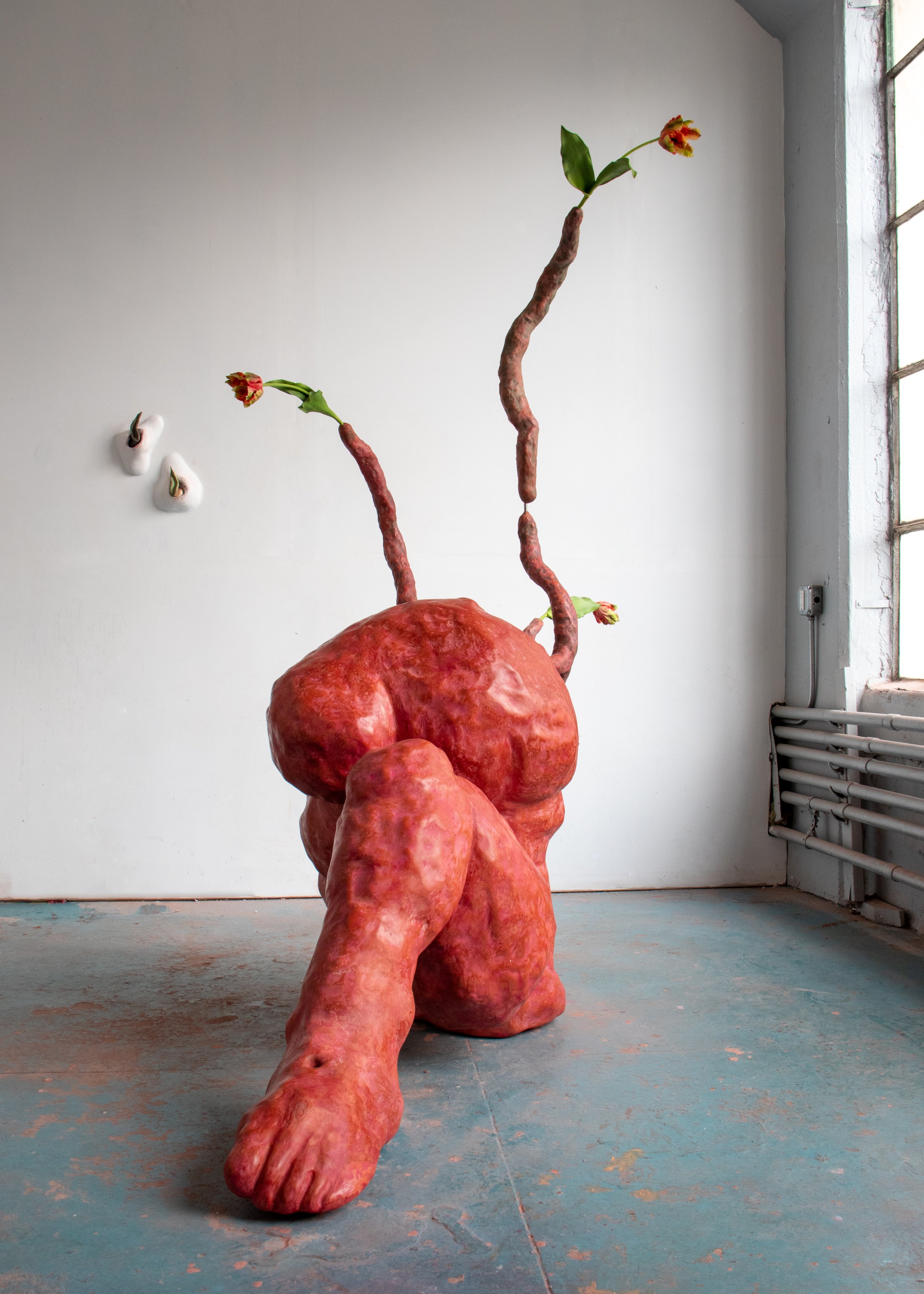
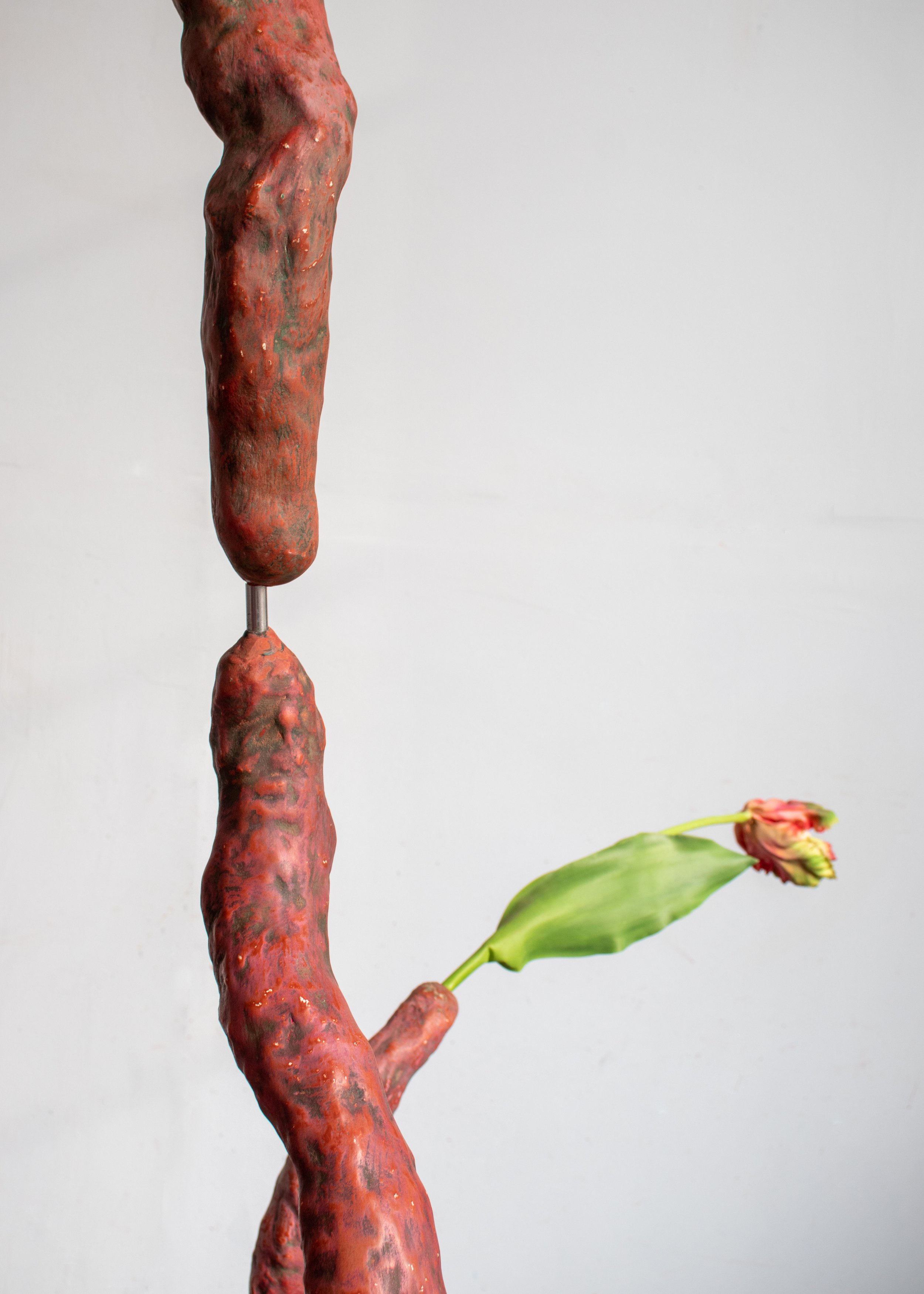
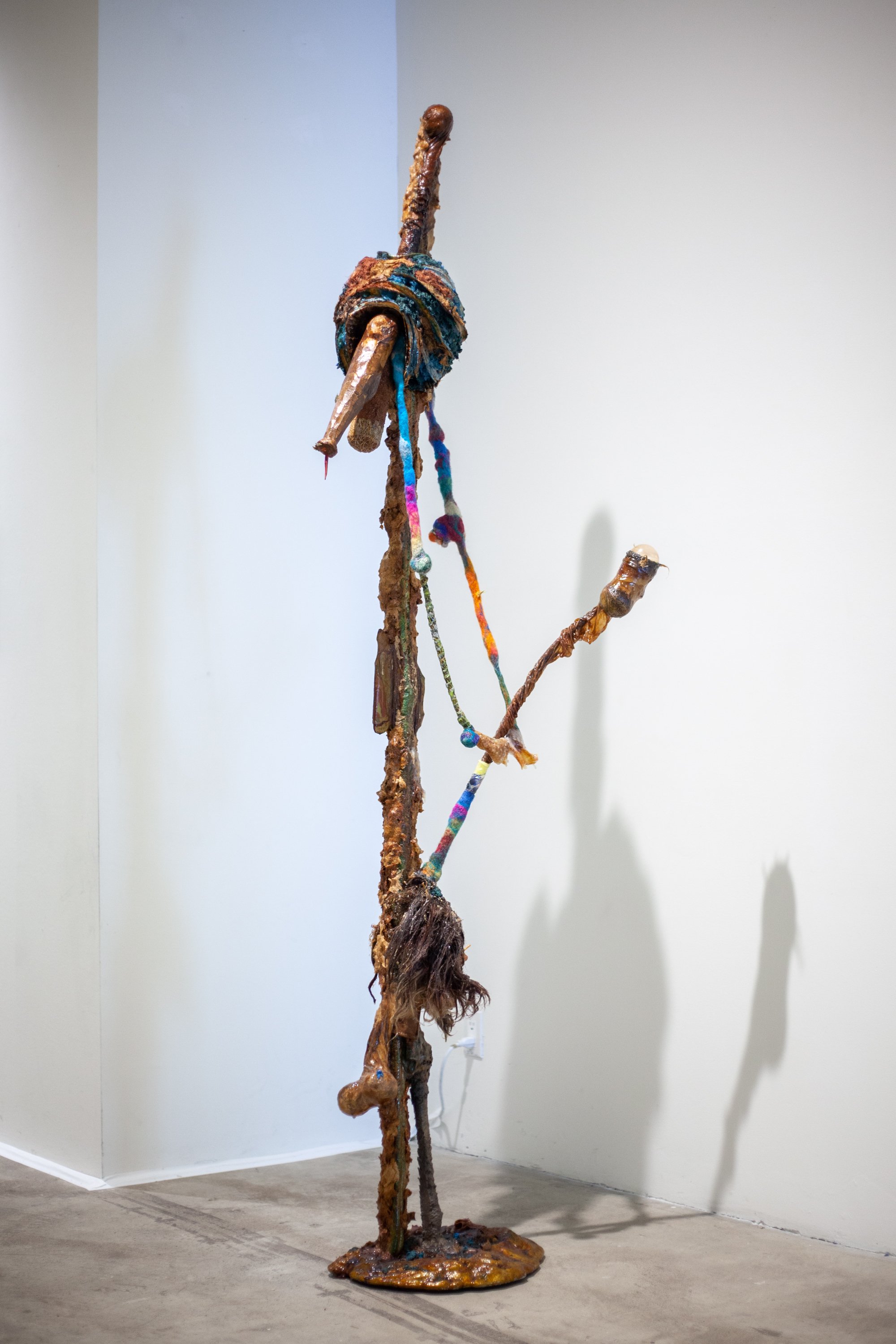
photo © The Bronx Museum of the Arts
PART TWO: By embracing possibilities and imagining speculative futures, the 27 artists featured in the second part of this year’s AIM Biennial expand upon those critical issues examined in part one as they create works and worlds which engage the complexities of the human condition: from our inseparability from nature to the dictates of our cultural identities and norms. Featured artists are Priscilla Aleman, Mickey Aloiso, Roni Aviv, Samantha Box, Ivana Brenner, Nicki Cherry, Christina Freeman, Sarah Friedland, Kat Geng, Daniel Giordano, Woomin Kim, Christopher Lin, Katherine Miranda, Carla Maldonado, Jonathan Sanchez Noa, Qinza Najm, Kark Orozco, María Elena Pombo, Xavier Robles Armas, Coral Saucedo, Daniel Shieh, Rachel Stern, Sagarika Sundaram, Lorenzo Triburgo, Derick Whitson, Huidi Xiang, and A Young Yu.
Connections between nature and the body are examined by multidisciplinary artist Jonathan Sanchez Noa, as he interrogates how histories of colonial extraction have impacted notions of race, identity, and climate. Incorporating Cuban tobacco leaf in handmade paper, Noa creates large abstract landscapes, exemplified by Untitled (OLÙFINA mi carne, Isleños) (2023), that reconstruct narratives of displacement and their cultural and religious significance. Sagarika Sundaram also uses natural materials such as fibers and dyes in her sculptures and installations that explore the interconnectedness of humanity and the environment with a particular focus on themes of migration, memory, and notions of home and domesticity. Subverting processes of mass production, Daniel Giordano’s provocative sculptures serve as eclectic assemblages—comprising industrial artifacts, foodstuffs such as prosciutto and Italian nougat, as well as all manner of organic material, from ticks to bald eagle excrement—that reflect the artist's family, his Italian-American heritage, and the postindustrial realities of Newburgh, New York, his hometown.
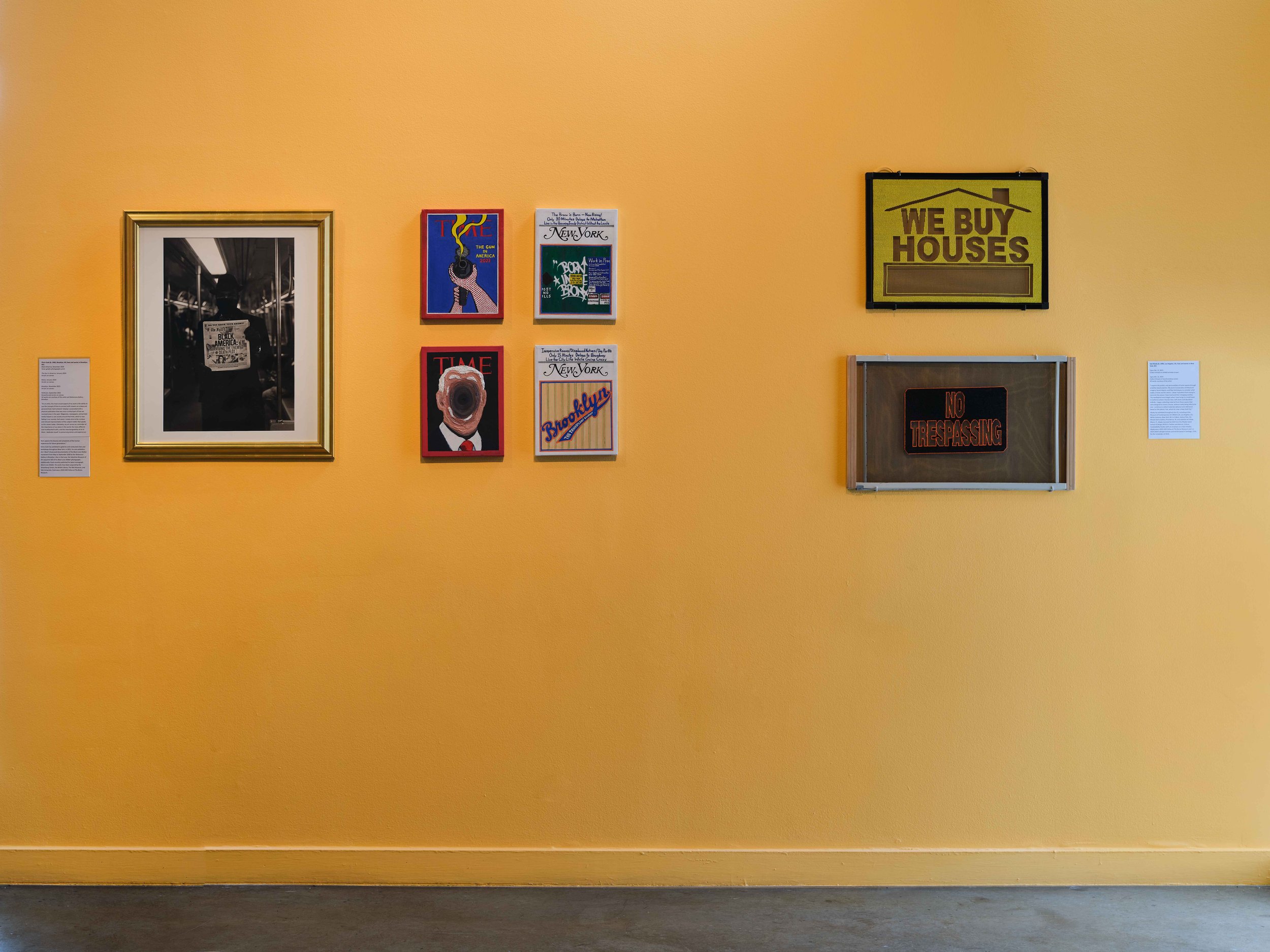
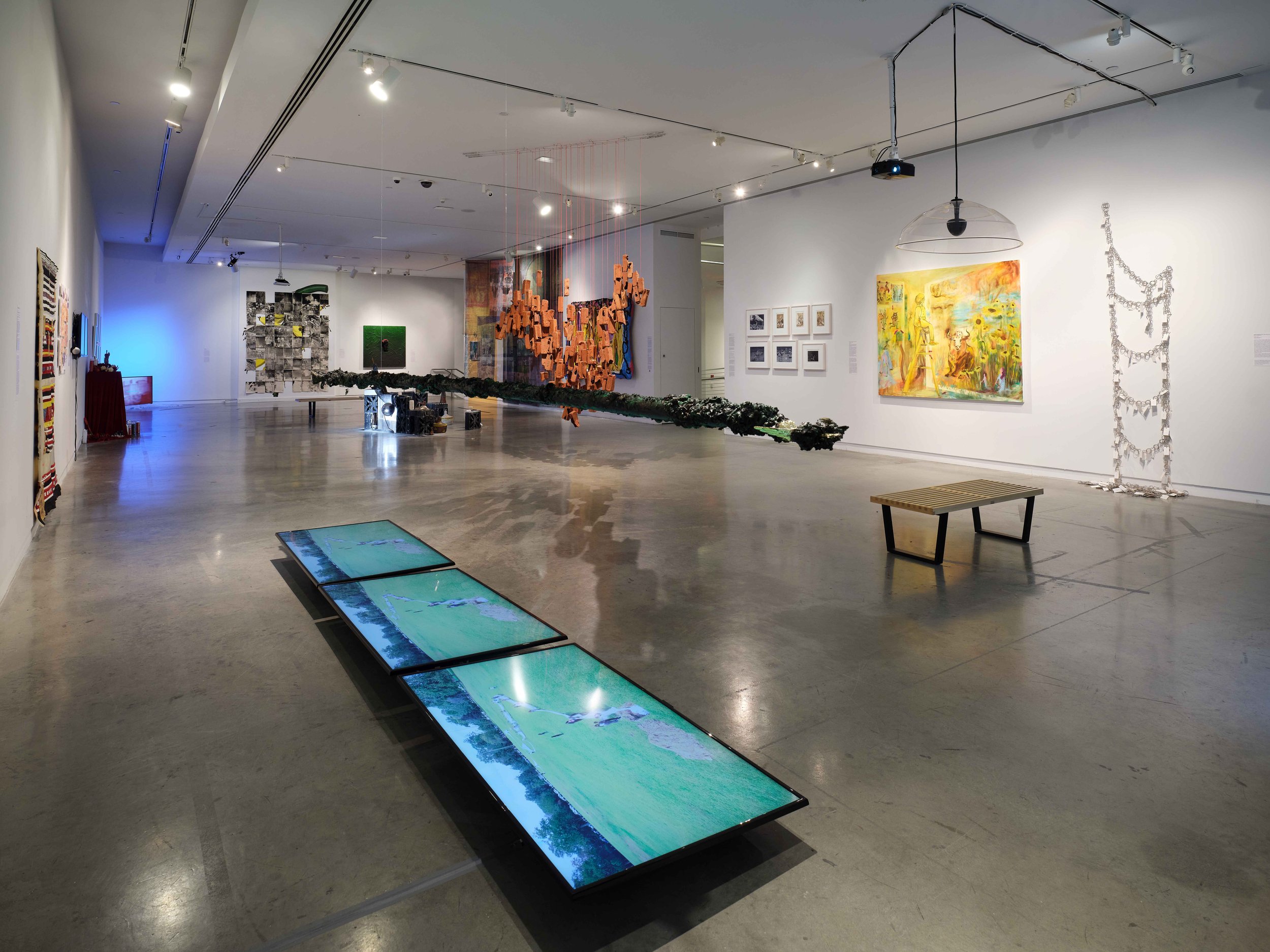
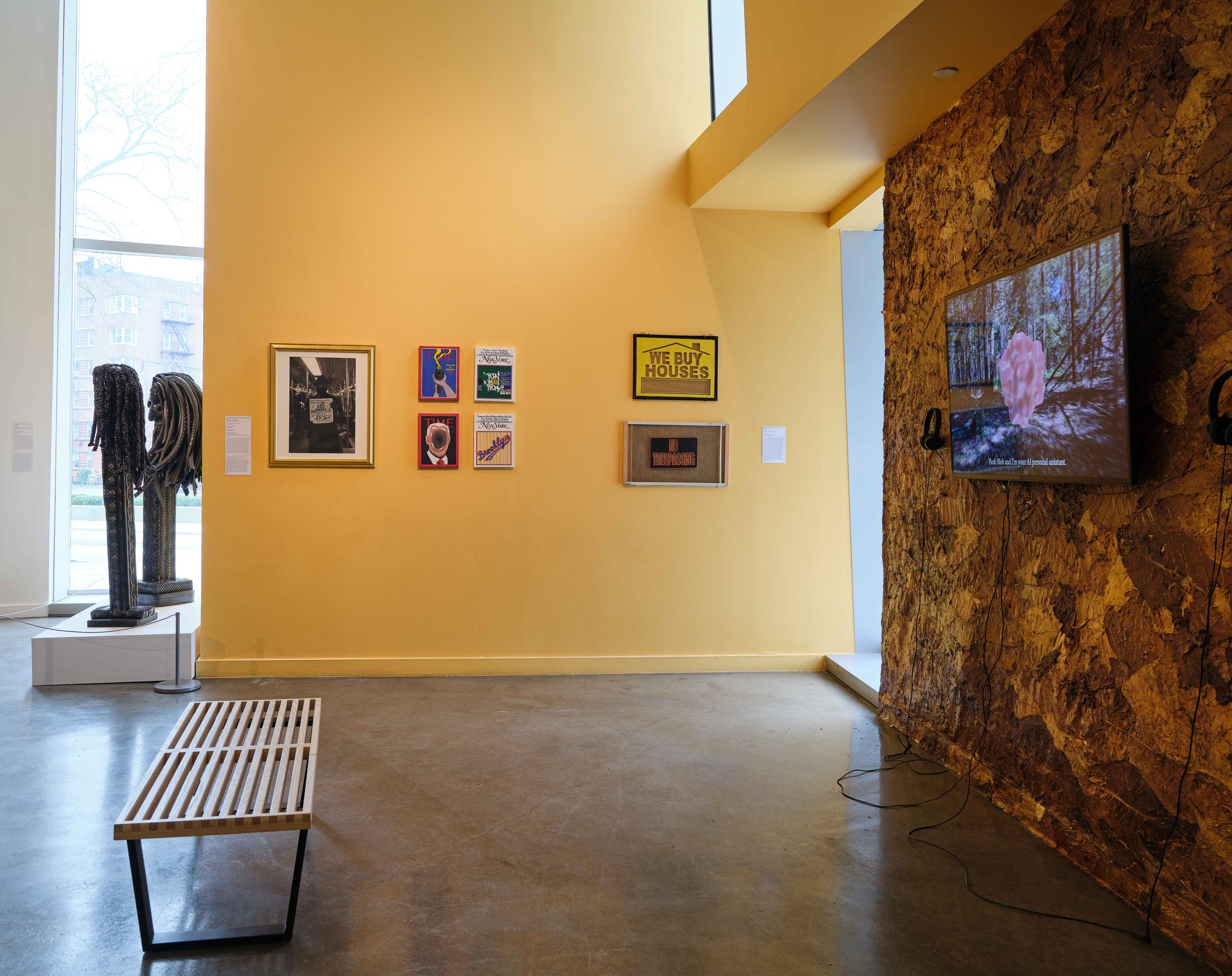
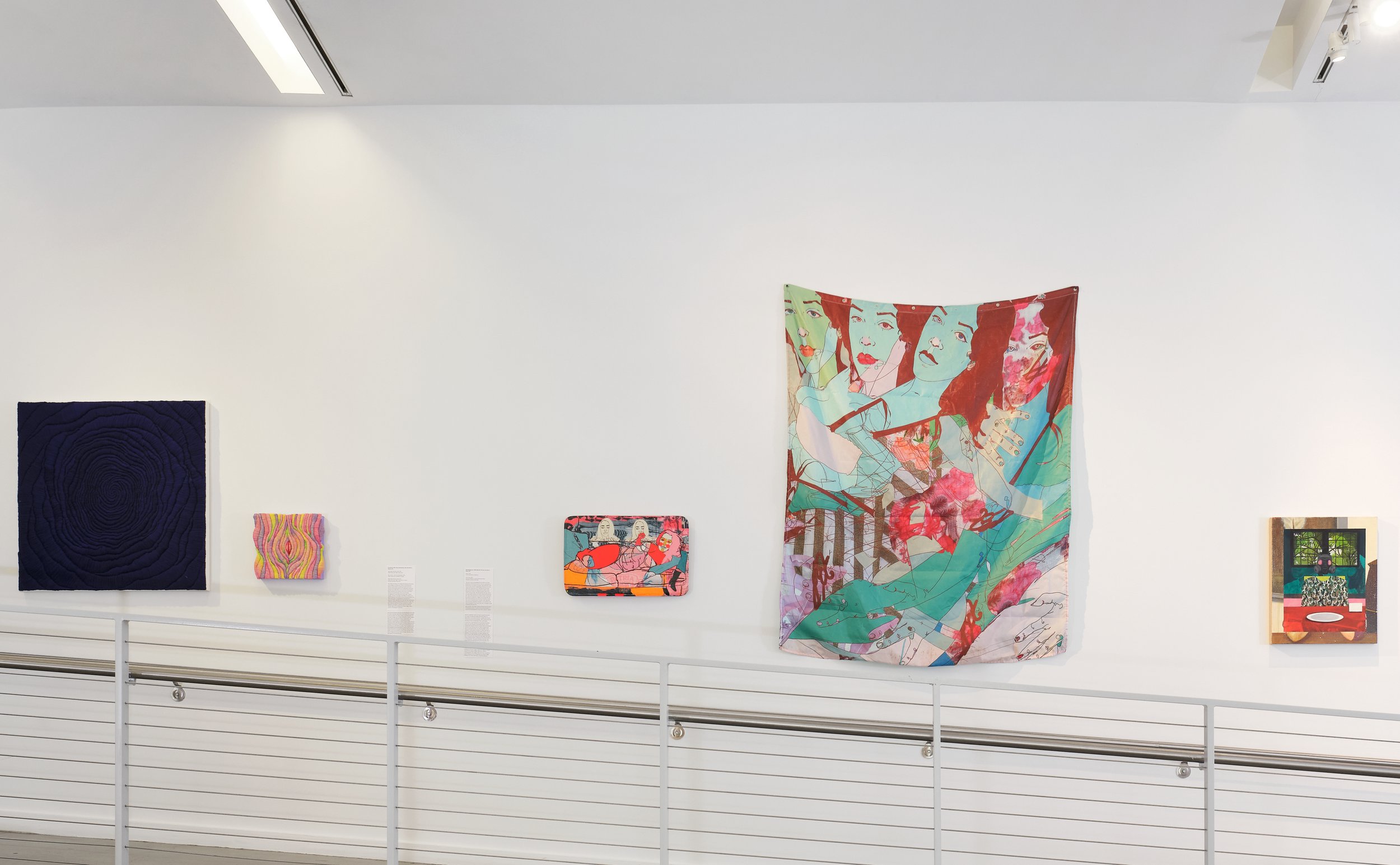
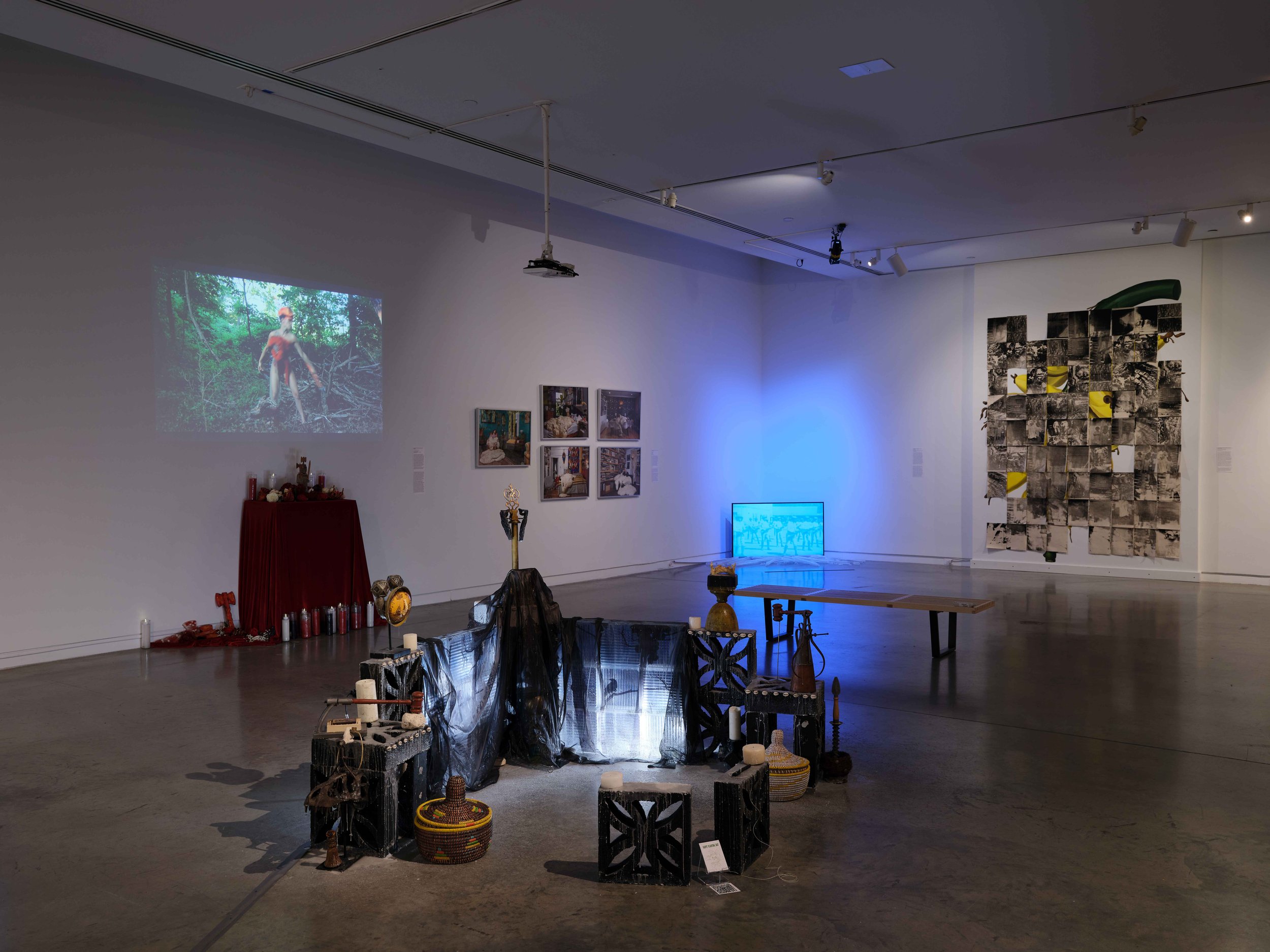
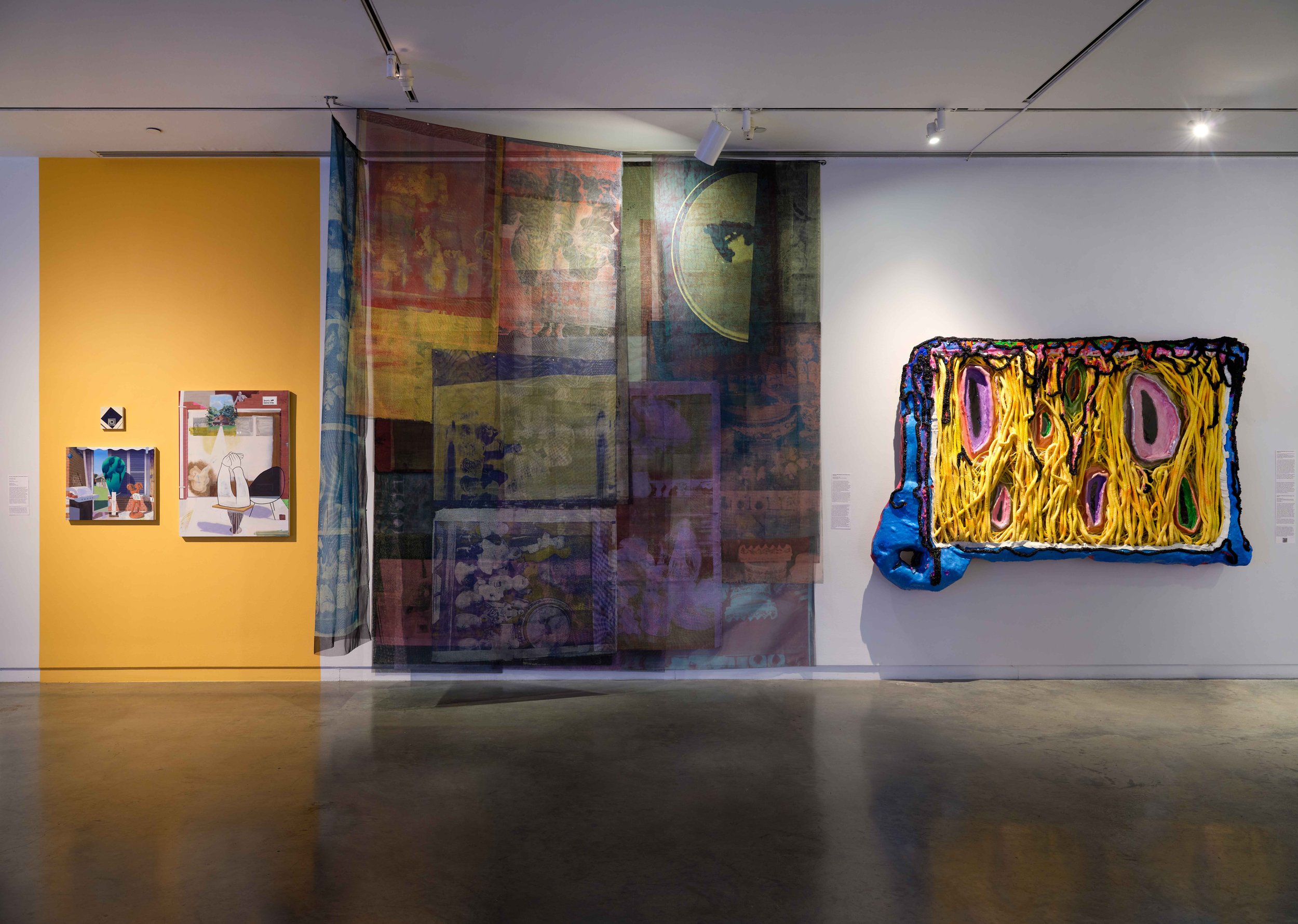

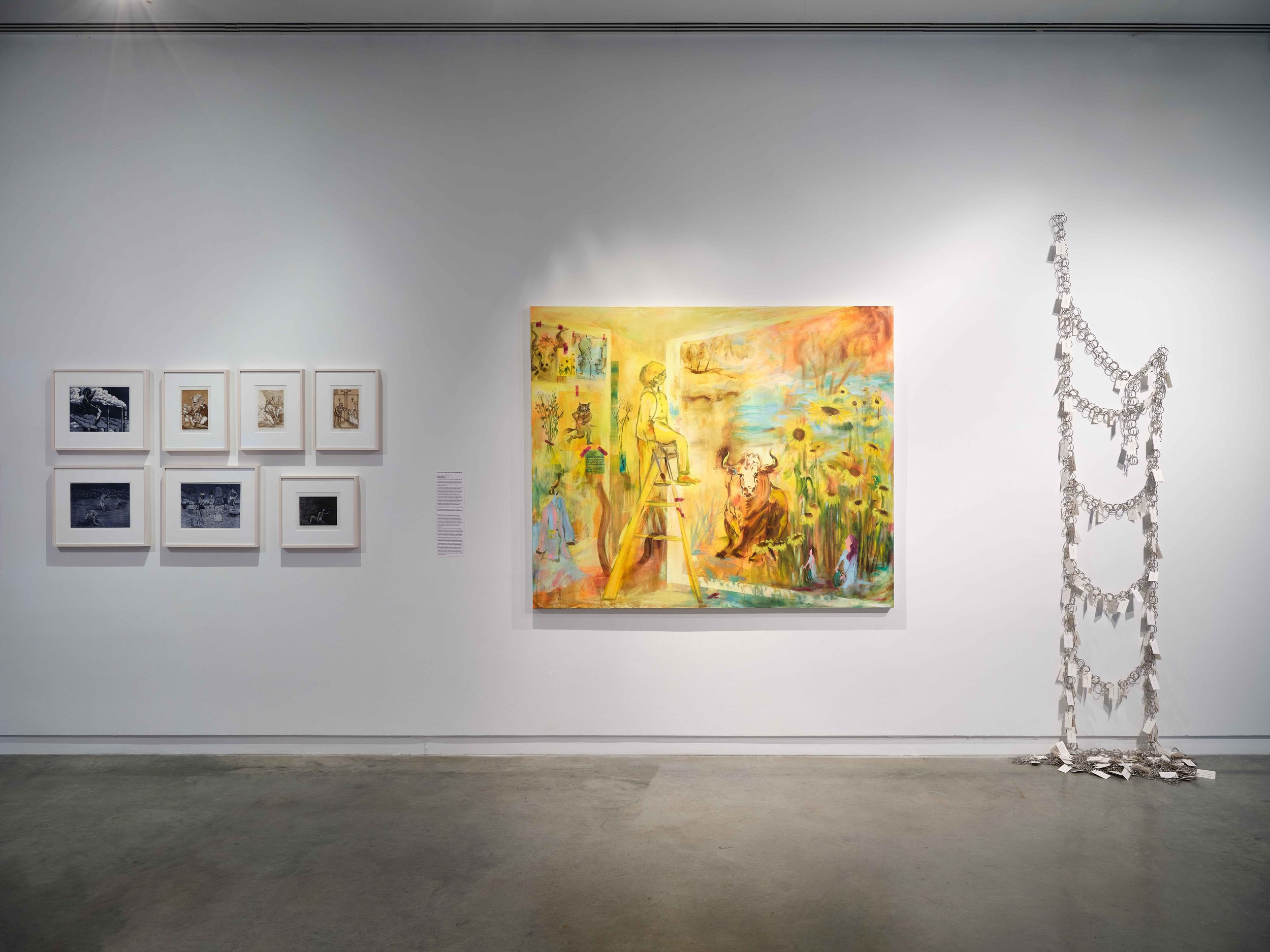
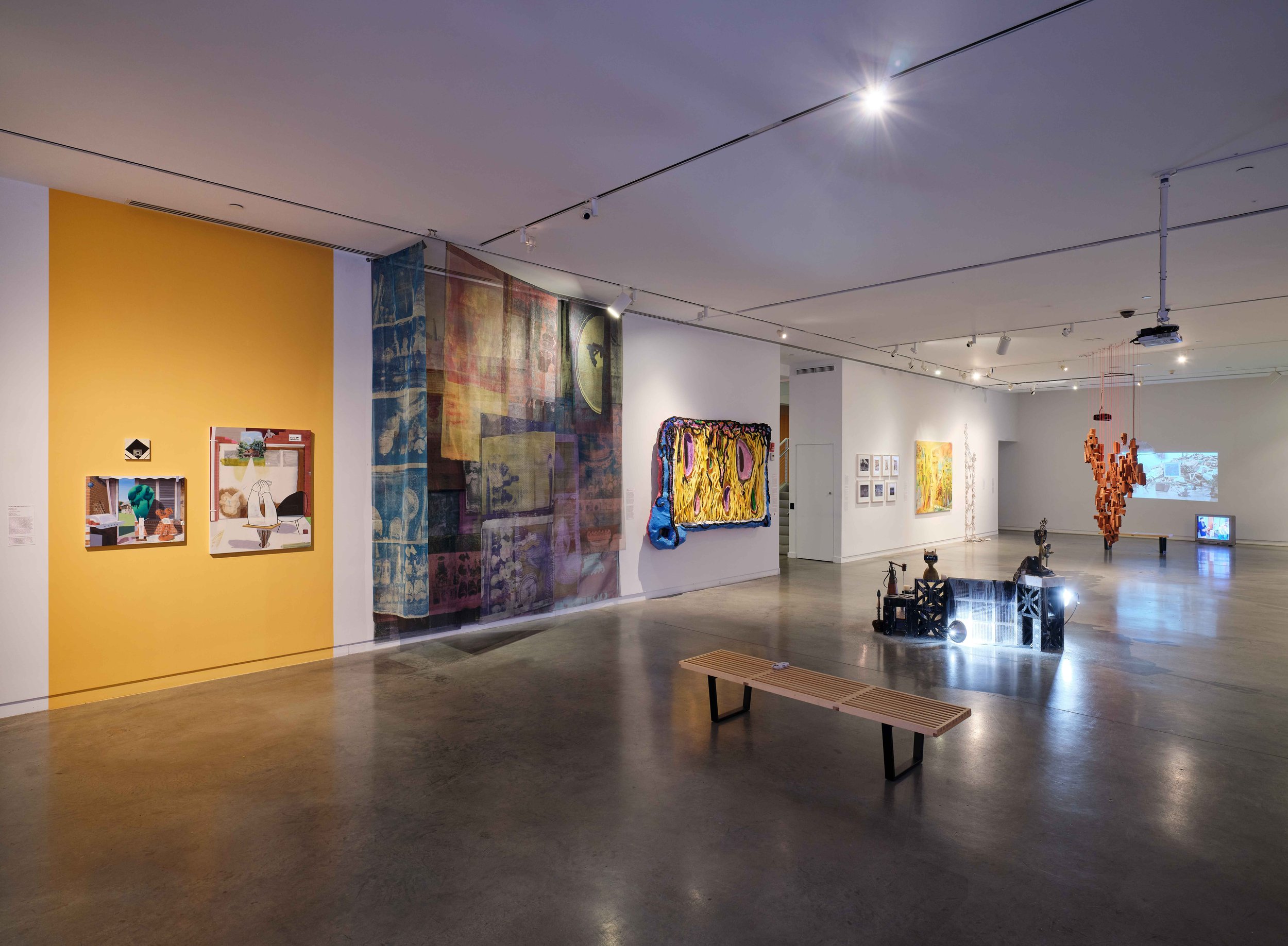
Installation photograph, Bronx Calling: The Sixth AIM Biennial, The Bronx Museum of the Arts, Jan 26 - Mar 31, 2024, photo © The Bronx Museum of the Arts
A tension that arises between the conflicting instincts of both embracing and controlling natural phenomena, including one’s own emotions and experiences, is examined on a psychological register by sculptor Nicki Cherry who delves into what it means to inhabit a body in her sci-fi-esque work that references mental illness, specifically anxiety, and the challenges of contending with it. Sarah Friedland addresses similar tensions in a more physical capacity as she brings attention to the power of movement in everyday life through highlighting home and trust exercises. In Movement Exercises Trilogy (2023), she reframes activities often considered banal, like walking a dog, to instead cast them in an empowering light, encouraging viewers to find beauty in ordinary actions.
The norms of bodily expression in various cultures are further explored by textile-based artist Woomin Kim, who draws upon her Korean identity to examine differing perspectives on sexuality within a patriarchal world. In Mokyoktang (bath house) (2023), for example, Kim highlights the lack of self-consciousness among individuals of different ages who gather in Korean bathhouses, and contrasts this with the far more private dispositions of individuals in the U.S., thus illustrating the dichotomy between private and public spheres and shedding light on distinct societal attitudes towards personal space and community.
CREDITS: Bronx Calling: The Sixth AIM Biennial is organized by Eileen Jeng Lynch, the Director of Curatorial Programs at The Bronx Museum.
ABOUT AIM:
Since 1980, The Bronx Museum has supported New York’s artist community through the AIM Fellowship, the Museum’s flagship artist development program offering career management resources to guide emerging artists through the opaque professional practices of the art world. Mentored by a distinguished faculty of industry experts, AIM Fellows engage in an intensive series of seminars and activities covering a wide range of topics including finance, law, media management, and writing, among others, that aid artists in building sustainable studio practices while expanding peer and professional networks. Since its founding, the AIM Fellowship has provided pivotal career support to a diverse roster of over 1,200 of New York's most promising artists, including Diana Al-Hadid, Firelei Báez, Njideka Akunili Crosby, Abigail DeVille,, LaToya Ruby Frazier, Lucia Hierro, Glenn Ligon, Sarah Oppenheimer, Michael Richards, Jacolby Satterwhite, and Saya Woolfalk.
ABOUT THE BRONX MUSEUM:
The Bronx Museum is the only major contemporary art museum in NYC with free admission year-round, making it a vital resource not just for residents in The Bronx, but thousands of residents from all five boroughs and tourists visiting annually. Now an internationally-recognized cultural destination, for the past five decades, The Bronx Museum has presented hundreds of exhibitions featuring works by culturally diverse and under-represented artists. The Museum’s permanent collection of 2,000+ works preserves and documents artists who are not typically represented within traditional museum collections by showcasing work by artists of African, Asian, and Latin American ancestry, as well as artists for whom the Bronx has been critical to their development. After over 50 years, The Bronx Museum continues to promote its mission of making the arts accessible to all audiences.
Please visit the museum's website here for more information about this exhibition and others. Also, you can find the Bronx Museum on Instagram, YouTube, and Facebook.
VISIT THE MUSEUM: 1040 Grand Concourse Bronx, New York 10456 T: 718-681-6000.
